

Navigating Money in Argentina: A Traveller’s Guide to Money Matters in 2024
Travelling to Argentina and wondering how to navigate the confusing topic of money in Argentina? This guide will help you understand cash, credit cards and more – along with handy tips I picked up living in Argentina for two years.
IMPORTANT! This article has been updated in April 2024, as things change frequently!
If you’re planning a trip to Argentina , you’ve probably stumbled upon a complex topic in your research: money.
Money in Argentina is a unique… confusing… complex situation. It’s unlike any other country I’ve ever been to. With raging inflation and decades of uncertain economic policy, it’s no wonder that visitors and residents alike struggle to wrap their heads around the different forms of currency exchange rates, the infamous mercado azul (blue market) and the ever-changing prices.
As someone who lived in Argentina for two years and grappled with these topics myself, I’m here to share my knowledge and tips on navigating money matters in this beautiful country.
In this guide, I’ll walk you through what you need to know to plan your visit, whether you should bring cash or cards, if you should use ATMs, how to exchange money and more!
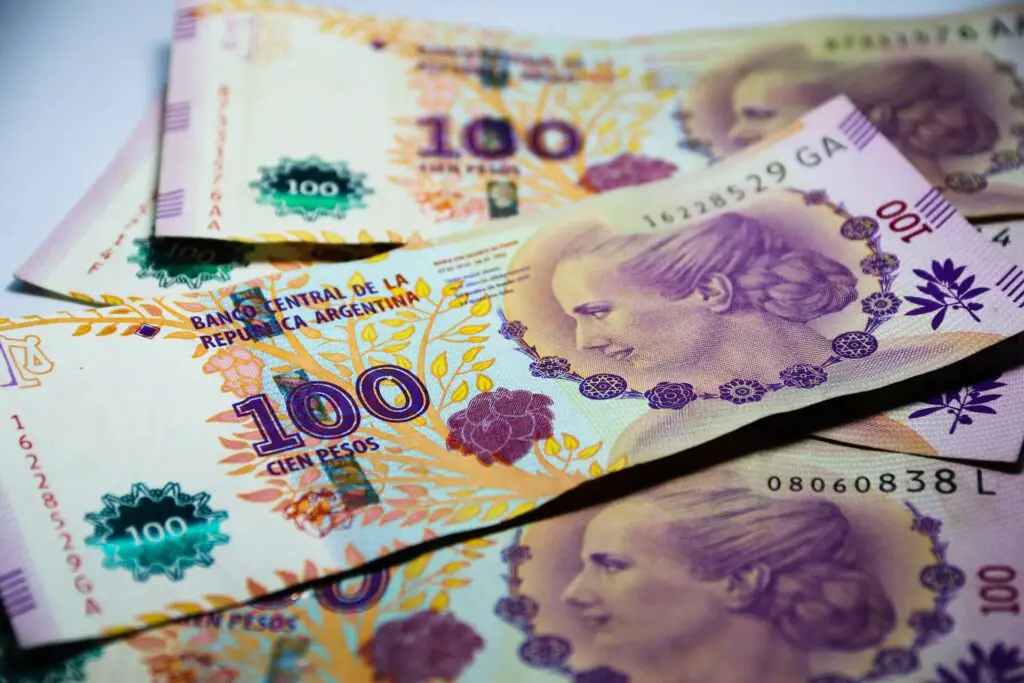
This blog post may contain affiliate links, meaning if you book or buy something through one of these links, I may earn a small commission (at no extra cost to you).
What's in this article (Click to view)
Understanding currency in Argentina
The official currency of Argentina is the Argentine peso, denoted as ARS. On signs, you’ll see the dollar sign ($) used.
The peso comes in various denominations, including coins of 1, 2, 5 and 10 pesos, and bills of 10, 20, 50, 100, 200, 500, 1000 and 2000 (the country introduced the 2000-peso note in 2023 to deal with spiralling inflation, and also phased out the 5-peso bill because it had such little value).
The 1000-peso note is worth less than US$1.50, so you’ll always be carrying large wads of cash with you!
But what you most need to understand is that the Argentine peso has been troubled by severe inflation for decades. This inflation makes the value of the peso quite unstable, with prices of goods and services frequently changing to keep up.
While many countries have been plagued by inflation of 7% or 8% over recent years, inflation in Argentina has reached 180% (and in decades past it’s even hit 20,000%).
It’s not uncommon to walk into a restaurant one day and pay a certain amount for a meal, only to walk in two days later and pay double – or more – for that same meal. Restaurant owners (and other shops) have to constantly adjust their prices to keep up.
This economic instability can be quite a surprise if you’re used to a more stable currency.
It’s tough for a country that was one of the richest in the world at the beginning of the 20th century.
The Blue Market: Argentina’s informal currency exchange
Because of this high inflation, Argentines prefer to hold onto and trade in US dollars, which is seen as a more stable currency.
This situation has led to the development of two distinct markets for exchanging currency. (Well, in fact, there are more than 10 different exchange rates but in this article I’m only going to talk about three!)
There’s the official market, where the government sets the exchange rate, and then there’s the mercado azul or the blue market, where the exchange rate is determined by supply and demand.
It’s not uncommon for the blue market rate to be significantly higher than the official rate – in fact, it can be double or more.
HOWEVER , since the election of Argentina’s new president, Javier Milei, in 2023, the situation has changed somewhat.
Upon taking office, Milei devalued the peso. His ultimate plan is to dollarise the Argentinian economy, although this will be challenging and will take time.
This means that the gap between the official and blue rates has tightened, and you can’t get the same value you once could when exchanging US dollars for pesos.
And that’s what we’ve been seeing recently. So, ALWAYS check the rates (link below!).
>> Check today’s rates online here <<
Is it still worth it to bring dollars and exchange them on the blue market?
I think it’s still worth bringing US dollars to Argentina and changing them here – either at the official rate or the blue rate.
The reason for this is that ATMs are awful. You can only withdraw a small amount of cash and the fees to do so are high.
I recommend having a mix of US dollars (to exchange to pesos), credit cards and ATM cards when you visit Argentina.

Exchanging money in Argentina
So you’ve brought your US dollars or Euros with you to Argentina – but how do you now get Argentine pesos?
While some restaurants and shops do accept dollars and Euros (there’ll usually be a sign with their rate, usually at the counter), they’re the exception rather than the rule.
Cash is king, so you will need to exchange that foreign currency for pesos. Note that US dollars will usually get a better rate than Euros. And US dollars are easier to change outside of Buenos Aires.
Here are a few ways you can exchange money in Argentina – both officially and on the blue market.

Cuevas (which means caves in Spanish) are the informal currency exchange houses that use the blue market rate.
Argentines use cuevas daily, and they’re safe places to exchange money.
I recommend asking your hotel concierge or a trusted Argentine friend for a recommendation for a cueva. While I said they’re safe, there are of course unscrupulous people everywhere who are more than happy to take advantage of a clueless tourist.
You might consider going with an Argentine the first time so you get the hang of it.
This is one of the easiest ways to exchange money in Argentina, and you’ll find cuevas in Buenos Aires and in major cities and towns. There are some recommended cuevas in this Facebook thread .
2. Calle Florida
Wander down Calle Florida (Florida Street) in Buenos Aires’ Microcentro at any time of day and you’ll hear the call of “Cambio! Cambio!”
These people are called arbolitos (or little trees, because they’re always standing there and because of the green colour of US dollars) and they’ll exchange money for you at the blue rate.
The exchange doesn’t happen there on the street – you’ll follow them into a shop or a cueva or even into a newsstand for the swap.
They usually have a machine to check for fake US dollar notes – and you’ll need to check your peso notes carefully as well when they’re handed over to you.
This was how I first exchanged money when I moved to Argentina and it did feel strange! They’re usually pretty safe – but trust your gut and keep walking if a situation doesn’t feel safe. Some have been known to notify their mates out on the street who will then rob people of the cash they’ve just collected.
One of the advantages of changing money on Calle Florida is that you can go from arbolito to arbolito for the best rate, so shop around before you exchange.
3. Currency exchange houses and banks
If the blue market makes you nervous, then stick with regular currency exchange houses like banks. They will, of course, use the official rate.
You might consider this when you first land in Buenos Aires , just so you have a little bit of cash on you. This’ll be handy to pay for your trip into the city (taxis don’t take credit cards) if you haven’t organised a transfer from the airport .
There’s a Banco La Nacion in Ezeiza International Airport where you can change a few dollars into pesos.
Hotels can also exchange money for you, as well as exchange bureaus ( casas de cambio ), which can be found around the city. Ask your hotel for the nearest casa de cambio .
You’ll need ID to exchange money at banks and exchange bureaus.
Western Union in Argentina
Carrying a large amount of cash anywhere can be nerve-wracking.
If you don’t want to bring a lot of US dollars or Euros in cash with you to Argentina, then Western Union is a great option. You can send money to Argentina using their service.
Western Union can provide you with an exchange rate that’s around the same or even higher than the blue rate (however keep in mind the pretty high fee that Western Union charges).
How to send money to Argentina with Western Union?
It’s quite simple: you send the money from your home bank account to yourself and then pick up the cash at a local Western Union branch.
It’s an efficient way to transfer money from your home country to Argentina without carrying large amounts of cash. Do remember that some transactions can take a few days to process, so plan ahead.
There are several Western Union branches in Buenos Aires – including one at Ezeiza International Airport (although the opening hours aren’t great if you’re arriving early in the morning or late at night).
Outside of Buenos Aires, there are also Western Union branches. Some have withdrawal limits, though, so you’ll need to check before you do a transfer.
Again, check the Western Union rate before you decide. The conversion rate can be found online here .
Credit cards in Argentina

When I lived in Argentina, I rarely paid for anything with a credit card, except for clothes and when we did our full grocery shop each week. At restaurants, cafés and convenience stores I always had cash on hand. At that time, credit cards charged the official rate, so I was always better off paying in cash.
However, since late 2022, foreign credit cards now receive a better rate. It’s called the MEP rate (you can find the latest MEP rate online here ) and it’s usually just shy of the blue dollar rate but higher than the official rate. But sometimes it’s better.
At the time of updating this article (April 2024), those rates were:
- Official rate: $905,30
- Blue market rate: $985,00
- MEP rate: $1000,00
If you use a foreign card in Argentina, this MEP rate will apply. Visa will charge you that rate at the time of purchase, while Mastercard charges the official rate and then refunds the difference a few days later.
This is another good way to avoid carrying huge amounts of cash.
On the topic of credit cards, American Express is rarely accepted anywhere, so leave that card behind.
But you need to keep in mind that credit cards aren’t always the most practical option in Argentina.
In larger cities, most upscale restaurants, hotels and retail outlets readily accept credit cards. But in smaller shops and restaurants – and in smaller towns in Argentina – cash is usually the only accepted form of payment.
Always ask before you sit down in a restaurant if they take credit card: “Acepta tarjeta?”
Either way, you’ll always need to have some amount of cash on you when you’re travelling around Argentina.
Speaking of restaurants, here are 50 of my favourite places to eat in Buenos Aires .
Expert traveller tip: If you’re going to rely on credit cards, always bring a backup credit card in case you have any issues with your main card. Make sure that back up card is a different type (Mastercard, Visa etc). I’ve had cards rejected multiple times when overseas so learned this trick pretty quickly!
Using ATMs in Argentina
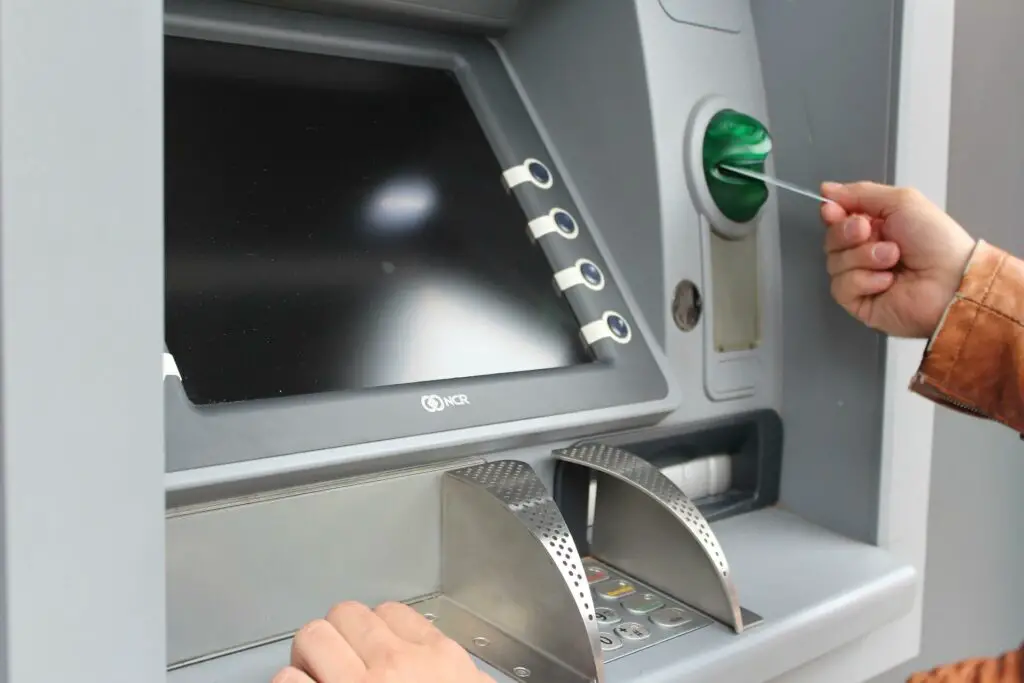
Should you use ATMs in Argentina?
This one’s easy: avoid using ATMs as much as you can!
In Argentina, ATMs have low withdrawal amounts and high fees, so you’ll be getting screwed all round.
ATMs should only be used as a back-up or last resort method for accessing pesos.
One important thing to note is that ATMs often run out of cash ahead of weekends and public holidays, so if you do think you’ll need to withdraw cash, do it as soon as possible.
Argentina money tips
When it comes to handling money in Argentina, here are a few handy tips I’ve learned from experience:
- Avoid exchanging money into pesos before you arrive in Argentina – you’ll get screwed over.
- Bring US$100 notes – the cleaner and crisper, the better. You’ll get a better rate for these in the cuevas.
- Cuevas will rarely want to change US$10 or US$20 notes. I’ve changed US$50 notes, but it was done reluctantly.
- Keep some small peso notes on hand – trust me, many shop owners aren’t fond of giving change.
- Be aware of money restrictions on bringing USD. Like most countries around the world, there’s a $10k limit without having to declare it.
- I’d recommend booking hotels and tours in advance online using your credit card. It simplifies things and cuts down the amount of cash you need on hand.
- If you’ve got pesos left over at the end of your trip, spend them! You’ll get a lousy rate transferring them back to US dollars or Euros. Buy some souvenirs in Buenos Aires to take home with you.
- Don’t get too hung up on the blue rate! Even at the official rate you’ll (usually) find Argentina an affordable destination.
Safety and security considerations
Carrying large amounts of cash and one or two credit cards can make you nervous. Remember, carrying the equivalent of US$50 means you’ll have around 45 x 1000-peso notes on you! That’s a stack of cash.
When it comes to keeping your money safe in Argentina, a few practical accessories can make all the difference:
- Money belt : May seem tacky, but it’s a relatively discreet way to carry money, provided you don’t access it in public.
- Passport scarf : These are actually quite useful – a stylish and less conspicuous way to keep your money and passport safe.
- Anti-theft backpack : Hidden zippers and slash-resistant materials provide an extra layer of security for your belongings.
- Lock : Keep your backpack or suitcase locked up when it’s unattended in your hotel room.
Remember, no safety device is foolproof. Argentina is a fairly safe country , but always stay alert and practice common sense in public spaces.
Final thoughts: Money in Argentina
So after reading this Argentina money guide, what money should you bring to Argentina?
I recommend:
- Bringing US dollars or Euros to exchange into pesos for use in restaurants and places that don’t accept credit cards – work out in advance how much money you think you’ll need for each week of your Argentina itinerary
- Bringing credit cards for bigger purchases at larger restaurants, shopping centres and so on – and don’t forget a back-up credit card
- Booking hotels and tours in advance (on your credit card in your home currency)
- Using Western Union to send yourself money and avoid carrying a large amount of cash – this is the best option if you’re travelling for a long time in Argentina
BUT, before you make your final decision, always check the latest exchange rates.
Money in Argentina: FAQs
Can i use travel cards in argentina.
You can use travel cards (like Wise ) in Argentina, but you’ll get an even worse rate than the official rate. Plus you’ll be dealing with the same challenges as using a credit card – not everyone accepts credit card. A Wise card might be a good back up option, but it shouldn’t be what you rely on for accessing money in Argentina.
Can I use traveller’s checks in Argentina?
I don’t know anyone who uses traveller’s checks these days! But if you insist… Yes, you can exchange traveller’s checks in Argentina, but you’re going to spend your time in banks doing the exchange. Time that is better spent out enjoying the city!
Is it better to use cash or credit cards in Argentina?
While credit cards are widely accepted in cities and larger towns, smaller establishments and vendors in rural areas may only accept cash. It’s best to carry a mix of both for convenience.
Can I withdraw money from ATMs in Argentina?
Yes, ATMs are available across Argentina. However, withdrawal fees can be high, and the exchange rate may not be as favourable as the blue market rate. Don’t forget to inform your bank about your travel plans to avoid any potential issues with using your card abroad.
What is the blue market in Argentina?
The ‘blue market’ refers to the unofficial currency exchange market in Argentina where US dollars or Euros can be exchanged for Argentine pesos at a rate higher than the official exchange rate. This isn’t always the case and it changes as governments introduce new economic policies.
Are US dollars accepted in Argentina?
While some places in Argentina may accept US dollars, it’s always more practical to use Argentine pesos. You can exchange your US dollars at a blue market exchange for a better rate.
How safe is it to carry cash in Argentina?
As with any travel destination, carrying a large amount of cash can carry some risk. However, with sensible precautions such as using a money belt or anti-theft backpack , it’s usually safe. Always be alert in public spaces and avoid showing that you’re carrying a large amount of money.
Did you find this article helpful? Consider buying me a coffee as a way to say thanks!
Got any questions about using money in Argentina for your upcoming travels? Drop them in the comments below.
Related posts
Before you go… you might like these Argentina travel blogs:
- Argentina itinerary ideas: Options for 1-4 weeks
- Plan a Trip to Argentina: 19 Travel Tips for First-Time Visitors
- Travel Insurance for Argentina: What You Need to Know
- Renting a Car in Argentina: 17 Helpful Tips and Tricks
ARGENTINA TRIP ESSENTIALS
- Book your flight to Argentina online with Skyscanner . I like how this site allows you to find the cheapest days.
- Find a great hotel in Argentina. Check prices on Booking.com and Expedia online.
- Check out the huge range of day tours throughout Argentina on GetYourGuide or Viator . There’s something for everyone.
- Keep those bottles of wine you’ll be buying safe in these wine bags .
- A copy of the Lonely Planet guide to Argentina will be handy. Also pick up a Spanish language guidebook to help you navigate your visit.
- One thing I always purchase is travel insurance ! Travel Insurance Master allows you to compare across multiple policy providers, while SafetyWing is great for long-term travellers and digital nomads.
PIN IT FOR LATER
Save this guide to money in Argentina to Pinterest for later.

About REBECCA
I'm a travel junkie who started dreaming about seeing the world from a very young age. I've visited more than 40 countries and have a Master of International Sustainable Tourism Management. A former expat, I've lived in Australia, Papua New Guinea, Argentina and the United States. I share travel resources, tips and stories based on my personal experiences, and my goal is to make travel planning just that bit easier.
28 thoughts on “Navigating Money in Argentina: A Traveller’s Guide to Money Matters in 2024”
Hi Rebecca,
I am Canadian and usually travel with a couple of credit cards, Canadian and US $100 bills. In South East Asia there was no problem exchanging the Canadian $100 bills for their currency at the street cambios. Can I exchange $100 bills to ARS on Calle Florida? Hope to go to BA next January for a couple of months. Thanks
Hi Lyse! I’m not familiar with people trying to change Canadian dollars for pesos… I think you’ll have much better luck with USD. Certainly, you could change Canadian dollars in official currency exchange houses, but highly unlikely with the street changers or cuevas. Your other option is of course Western Union.
(Having said that, check the rates as you get closer to your travel date – if it’s anything like right now and the spread between the official and blue market rates continues to be so slim, there’ll probably be little difference to changing on the street/in cuevas versus the official currency exchange places.)
Hi Rebecca! This is very helpful specially with the new president I think things have changed a lot… My question is, what is the best way to book hotels and such and get the most out of your dollar? Any tips on that?
Hi Diana! To be honest, I’d usually book via a site like Booking.com or Expedia – so I know exactly what I’m paying and there are no surprises when you arrive and maybe there’s a different exchange rate than you expected. I also like those sites because I can book refundable accommodation if I change my mind. And way easier than having to email hotels directly to find out their exchange rates etc. Hope that helps!
Great article, Rebecca…thank you! One question, since we have lots of tours planned. For gratuities to tour guides, how would they prefer to be tipped? USD? Thank you so much!
I think either pesos or USD would be much appreciated! Everyone will have different preferences – you could ask them first (they’ll understand why you’re asking given how complex money in Argentina is!!).
Hi Rebecca, thanks this is super helpful. We are traveling to Argentina in a week from Ireland. The MEP rate seems to be better than the blue rate at the moment according to https://www.lanacion.com.ar/dolar-hoy/ . Is this your experience? And does this mean it is better to use credit cards in and around Buenos Aires? Is there a good app to download that allows you to quickly compare rates? Do you think I better changing Euros to USD before I come, or bringing Euro? Also do you know if Brazilian Real can be purchased in BA? thank you in advance!! Aran
Hi Aran, The rates change regularly, that’s right! They’re on par at the moment. You can use your credit card – but you do need to have cash because not every restaurant/business/cafe accepts credit card. So use a mix of both so you’re not caught out.
The newspaper websites are the most up-to-date with the rates, they’re what I’ve always referred to… I don’t think there is an app that shows the rates (but I could be wrong – I’ve just never needed one).
Euros will be fine, but you will usually get a better rate with USD (and USD is more readily accepted by money changers).
I’ve never actually purchased reales in Buenos Aires, but I’m sure you can – you’ll need to go to an official currency house to do, though.
Have a great trip – hope this helped!
I know your article is about money and it’s very useful, I’m just wondering off topic about the Mosquito situation. I was planning a stay in April but started reading about the significant infestation of mosquitoes plaguing the country. Is this a major situation that makes walking and enjoying the nights unbearable?
Hi Michael, the weather will be cooler in April so the chance of mosquitoes should be much lower!! Right now it’s not fun in certain parts, but it should improve by April.
When I make a reservation for a hotel room that is quoted $200 USD and I pay with my credit or debit card, will my rate be adjusted based on the official rate of exchange? Sheila S.
It depends – how are you paying? If on a website like Booking.com, then the quoted rate will be as it is. If you have arranged with a hotel directly, then it will determined by them which rate you use.
Hi Rebecca, I would pay for hotels with my visa card. I typically reserve on the hotel site. Some are American hotels such as Marriott and others would be Argentine. For example if the hotel price is quoted as $200 USD, would it be calculated based on the exchange rate and ultimately be less than $200 USD? I am trying to budget accordingly. Thank you.
Hi Sheila, for an American site, you can expect to pay in USD always. For an Argentine site, you’d need to check with each one directly, as each hotel charges differently and would likely use a different rate. Have a great trip!
Hi Rebecca, really appreciated your article. Being an Aussie I was wondering if you had any experience with exchanging AUD to ARS whether through Western Union or the other ways mentioned above. Did you use any Australian credit cards to make purchases? I have a Wise Travel card and card with Commonwealth Bank, so curious to see if you used any of them whilst in Argentina. Additionally when you went to El Calafate and El Chalten what were your experiences with making purchases there via card and cash? Were taxis/car rental/buses usually card or cash? Cheers
Hi Nicole! I’ve never transferred AUD via Western Union – but I always used my Aussie credit cards when I lived there (along with exchanging USD in cash into pesos). I’d check with your bank just to be 100% sure but I never had a problem with them (I used my Aussie credit cards for grocery shops, larger restaurants, clothes, bars etc).
Taxis and public transport are always cash – everywhere in the country, even in Buenos Aires (although you can use Uber in BA).
I’ve never used a Wise travel card there, I’m afraid!
We have just returned from Argentina and Chile. We found your site a good guide before we left. Western Union worked ok and we got1280 pesos to the pound. We were not aware that you have to withdraw the whole amount that you transfer. We were under the impression we could call it off in bits. Some Western Union outlets have limits on how much you can withdraw so we had to go to the main branch in Buenos Aires. Monzo card worked perfectly in Chile and Argentina. We got a rate of 1400 pesos to the pound on it.
Thanks Sue – that’s great to know about not being able to withdraw in smaller amounts.
Glad you had a great trip!
Is there any difficulty getting dollars back OUT of Argentina? I need to travel to Buenos Aires to settle some affairs, and want to take the proceeds back to the U.S. with me. But I’ve been told there are hefty fees for taking dollars out of the country. However, I can’t find any information about that online. So… is it true?
Hi Emjay, I can’t find much info on this either. I think your issue would be the country that you’re next going to, they’re likely to have a $10k import limit as well?
Speaking of cash, I was wondering about tipping in Buenos Aires. Do I need some pesos or will small US dollars be ok? Or is tipping even expected? Leaving in about 30 days and will only be in BA for 2 days. Would the same be true for other countries such as Chile and Peru? Thanks for your excellent advice.
Hi Judy, small peso notes are usually best for tipping – that makes it easier for staff/businesses to actually use it (rather than then having to exchange it if you tipped them with USD).
From my experiences visiting Chile and Peru, tipping is also voluntary – but always appreciated. Again, using the local currency when tipping is best.
Have a great trip!!
In february 2023, the Western Union office at the airport was closed permanently. So we had to withdraw pesos at the official change rate.
Thanks for sharing this, will update the article!
Are Uruguayan pesos accepted?
Hi Diane, No, Uruguayan pesos aren’t accepted in Argentina. In Buenos Aires some stores may accept Brazillian reals, but never Uruguayan pesos.
You’ve done a great job with this discussion and I wish I had read it prior to arriving in BA from the US in mid November 2023. Slightly stronger language about the official vs. the non-official exchange rates would be helpful. For example, on one site the writer said it is best to consider Argentina a “cash only country,” which drives home the point that you will be better off estimating your spending and bringing that amount of dollars. To estimate it’s important to decide if you’re going to exchange at the official rate or at the much much better unofficial or “blue” rate”. You say peso prices are still “affordable” at the official rate, which I agree with; however, remember that the blue rate has lately (November/December’23) been about 168 percent better than the official rate! That’s on everything you pay for with your ARS pesos. Usually “doubling your money” is not real, but this is real, easy, and safe and is actually *more than doubling* the value of your dollars. One last comment: Western Union is indeed a very good option here- compared to usually being a last resort in the USA- as you describe because their fee, which be US$37. is virtually negligible considering the practically surreal amount of additional pesos you’re getting using the [slightly downward adjusted] blue rate that Western U. gives you. The WU app works well and you’ll know the exact exchange rate you’re getting and any transaction fee they may charge. Your first transaction usually has “no fee”. Take USD cash, get the best rate with that, and, if you underestimate, use WU. Rebecca makes excellent additional points on my points and on WU.
Thanks David. It’s a tricky thing to navigate in Argentina! I’ve kept the article quite general as things do change regularly in Argentina – sometimes the blue rate does double your money, other times it’s only slightly higher. Hopefully it helps anyone who is planning their trip!
Leave a Comment Cancel reply
MORE INFORMATION
ABOUT WORK WITH ME CONTACT PUBLISHED WORK
AFFILIATE DISCLOSURE
AS AN AMAZON ASSOCIATE I EARN FROM QUALIFYING PURCHASES
© 2024 REBECCA AND THE WORLD
Privacy Policy
I ACKNOWLEDGE THE WURUNDJERI AND BOON WURRUNG PEOPLE OF THE KULIN NATION AS THE TRADITIONAL OWNERS OF THE LANDS AND WATERWAYS OF THE AREA I LIVE ON. I PAY MY RESPECTS TO ELDERS PAST AND PRESENT AND CELEBRATE THE STORIES, CULTURE AND TRADITIONS OF ALL ABORIGINAL AND TORRES STRAIT ISLANDER PEOPLE ACROSS AUSTRALIA.

- Privacy Overview
- Strictly Necessary Cookies
This website uses cookies so that we can provide you with the best user experience possible. Cookie information is stored in your browser and performs functions such as recognising you when you return to our website and helping our team to understand which sections of the website you find most interesting and useful.
Strictly Necessary Cookie should be enabled at all times so that we can save your preferences for cookie settings.
If you disable this cookie, we will not be able to save your preferences. This means that every time you visit this website you will need to enable or disable cookies again.

‘Foreign tourist dollar’: everything you need to know about the preferential exchange rate
If you’re visiting argentina, you’ve probably heard you need to pay for everything with stacks of cash to stretch your dollars. but as of december, you can get the same rate on your mastercard or visa. here’s what you need to know about paying by credit card in argentina..

- January 20, 2023
January 6, 2023 – updated January 20, 2023
Aline Spating arrived in Argentina on a very hot January day and spent much of it in a very long line, slumped in the shade among tourists swigging beer from coolers. The 24-year-old German had just crossed the border from Brazil to the steamy Argentine jungle town of Puerto Iguazú, and was waiting to change a stack of US dollars into pesos at Western Union.
It was worth the delay, she felt: fellow travelers had warned her never to pay by card in Argentina, because changing money at Western Union would give her almost twice as many pesos per dollar. The owner of her hostel even drew a concept map explaining Argentina’s economic ordeals, saying she should pay for everything in cash changed at Western Union or cuevas (caves, or illegal exchange houses).
What Aline didn’t know was that these financial gymnastics aren’t necessary anymore.
Until recently, payments made in Argentina with foreign credit and debit cards were changed at the official dollar exchange rate, which is AR$185.75 to the dollar at the time of writing. But on November 4, Argentina’s central bank launched a preferential exchange rate for foreign tourists.
Known as the “foreign tourist dollar”, it means payments made on foreign credit cards use the “ MEP ” (“Electronic Payment Market”) dollar exchange rate, which is currently AR$331.79 to the dollar. In other words, if you’re paying by card, your dollars go 78% further than before.
Currently, the “foreign tourist dollar” only works for purchases, and not cashpoint withdrawals.
How does the “tourist dollar” work?
Mastercard joined the program on December 2 and Visa followed suit just under two weeks later, meaning payments made in Argentina through foreign credit card from those companies are now processed at the MEP dollar rate.
Mastercard confirmed to the Herald that their cards charge their users the official rate then reimburse them for the difference, while foreign Visa holders said their cards process the initial payment at the MEP dollar rate.
Lucas P.M., a 59-year-old U.S. citizen, told the Herald a purchase he made on his Mastercard was charged at the official rate (in this case, US$22), but he was automatically reimbursed for the difference (US$9.52) four days later. Three other Mastercard users told the Herald they’d had the same experience.
Lucas visits Argentina once a year, and said he would continue using his card “basically because of the convenience of it: first, because I did not bring any cash with me and, second, because I do not know any arbolitos [informal dollar sellers]”.
“Returns are identified days after the purchase, since it depends when the transaction is effectively processed,” said Federico Cofman, Mastercard’s Country Manager for Argentina and Uruguay. He added that returns were usually made within 72 hours, depending on the card issuer.
Visa cardholders told the Herald their payments had been processed at the MEP rate. Mariana (not her real name), a 26-year-old Guatemalan, used to bring US dollar bills from her home country and change them in cuevas or with friends. “I stored them under the mattress and dosed them. When I saw the blue dollar [the informal exchange rate] went up, I exchanged,” she said.
When the change came in, she made an experimental purchase to see what would happen. It went through with no problems at the preferential rate, so she will now start using her card. “The difference between the ‘tourist’ [dollar] and the blue is like 30 pesos, so it’s not that big, and it works for me because I don’t have the inconvenience of having to buy everything with cash or running out of dollars,” she said.
With Visa and Mastercard, “more than 90% of the market share” is covered, according to sources inside the central bank. “Only AMEX [American Express], which has less than 10% of the market, is still not on board”. Representatives for American Express in Argentina told the Herald that the company is going to offer the service, but cannot give a precise time frame yet. “We’re working on the implementation and the system and process adaptation, which will take a while,” they added.
What are the advantages and disadvantages?
The new rate makes the country a cheaper destination for tourists. Switching from cash to card payments could also be safer, since tourists will no longer have to take their chances with informal exchange houses and hotels will not need to handle such huge wedges of cash, sources in the tourism and hospitality sector said.
The greatest takeup so far has been from Brazilians, followed by Europeans and visitors from the US, according to the Tourism Ministry, which views the measure as a resounding success. They think the new exchange rate will help restore tourist industry income to pre-pandemic levels, or even surpass those figures.
Cofman, the Mastercard country manager, said that foreign card transactions increased by 25% in value and 28% in volume within a week of the new rate’s implementation. At first, purchases were dominated by “typical” card purchases such as air tickets, restaurants and hospitality, he said, but holders are increasingly paying for everyday things such as supermarket bills and transport by card.
However, some tourists on low budgets are not convinced.
“I will probably always use the way that gives me the most pesos,” Spating said. At the time of writing, there is a small difference of 30 pesos per dollar between the informal (blue) and MEP exchange rates. “I also prefer cash because, when I wanted to pay the hostel with my card, for example, the owner told me it’s an extra 5%,” she added.
It is worth noting that some businesses, especially informal traders in smaller and more remote areas, don’t take card payments, so it’s always a good idea to carry cash, just in case.
A side effect
The new exchange rate is designed for foreign tourists, but Argentine residents who have foreign credit cards can also take advantage of it because the Economy Ministry currently has no way of telling whether a cardholder is a resident. Carlos, a 33-year-old Argentine software engineer, who asked the Herald to withhold his real name because he was concerned about possible legal consequences, tried both his Visa and Mastercard U.S. cards, and the “tourist dollar” exchange rate worked like a charm.
Like a minority of Argentines that work remotely for foreign countries and could open an account in an overseas bank, his dollars are now worth nearly twice as much as before.
You may also be interested in:
“Tourist dollar” preferential rate now available for digital wallets
UnionPay cardholders now get foreign tourist dollar rate
Related Posts

- Infrastructure
- Food & Drinks
- Essential Buenos Aires
- In Patagonia
- The Wetlands
- Terms & Conditions
All Right Reserved. Buenos Aires Herald
- Culture & Ideas
- The Archives
- Argentina 101
- What to do in Argentina
The Best Credit Cards For Travel to Argentina

Argentina is a magnificent destination for a vacation. Buenos Aires has a European feel to it and is the perfect jumping off point for everything from adventures in glacier-strewn Patagonia to a relaxing time enjoying wine in Mendoza.
But if you scratch the surface recent Argentine history, you’ll learn that it’s had difficult economic times in recent years.
It suffered through a great depression at the turn of the century, and it’s survived a currency crisis over the last few years.
Before my trip to Argentina in 2013, my family there told me that the government was fixing the currency at an unnatural exchange rate for any bank transactions.
This meant that travelers would receive a very unfavorable exchange rate when they purchased anything using a credit card.
And it was easy to receive several times more Pesos exchanging U.S. dollars on the street than you could from an ATM machine.
Knowing this, we brought hundreds of U.S. Dollars in cash with us that we exchanged and used daily. In fact, we never even touched our credit cards.
But in 2015, Argentines elected president Mauricio Macri that floated the currency, resulting in a massive devaluation.
As before, Argentina remains a bargain for US travelers, although the favorable exchange rate is somewhat tempered by inflation.
And most importantly for visitors, you can use your credit card again without getting a horrible exchange rate.
The Best Frequent Flyer Programs for Free Trips to Argentina
Argentina can be a tough frequent flyer award to book from the United States.
First, the country really has only one intercontinental gateway, Buenos Aires. And although Delta , United, and American all offer service to Buenos Aires from their largest hubs, they don’t make a lot of award space available at the lowest mileage levels.
You might get lucky and find some, but it wouldn’t be a great strategy to save miles just for that rare opportunity.
There are also two South American carriers that offer non-stop service to Argentina from the United States.
Aerolineas Argentinas is the national carrier of Argentina, and it offers non-stop service from Buenos Aires to New York-JFK and Miami.
Aerolineas Argentinas is a member of the SkyTeam Alliance, which includes partners such as Delta and Air France/KLM. It’s also known to offer a fair amount of award space between the U.S. and Buenos Aires.
LATAM, which is the result of a merger between the airlines LAN and TAM, also offers service to New York-JFK and Miami.
It’s a member of the OneWorld alliance, which includes American Airlines.
However, you will find award space to be somewhat rare on their non-stop flights to Buenos Aires, but a little better on flights that connect through their other South American hubs.
But with either Aerolineas Argentinas or LATAM, you can usually find plenty of available award seats from Buenos Aires to other destinations within Argentina and neighboring countries.
Choosing the right credit card to earn your award trip to Argentina
As with any big award trip, you might want to start with a credit card that offers you more points and miles to add to any program you already have rewards in.
Another strategy is to use a program that allows you to transfer your rewards to miles with several different other airlines.
Here are a few of the best credit cards you can use for an award trip to Argentina:
Chase Sapphire Reserve
Chase Sapphire Reserve comes with a large sign-up bonus and you also receive 3x points for all travel and dining purchases, and one point per dollar spent elsewhere.
This card’s rewards come in the form of Ultimate Rewards points, which can be transferred to miles with seven different frequent flyer programs.
To get to Argentina, one option is Korean Airlines, which is a SkyTeam members.
This allows you to book award tickets on Delta, Aerolineas Argentinas, and AeroMexico. Korean charges 50,000 miles round-trip in economy class, and 110,000 in business.
Another option is to transfer your miles to British Airways , which is part of the OneWorld alliance, along with American and LATAM.
The British Airways award chart is distance based, so the miles required will vary based on the route you take.
British Airways miles are also great for flights within the country on LATAM Argentina. Flights start at just 4,500 miles each way for trips under 650 miles.
Just note that most domestic flights from Buenos Aires depart from Aeroparque Jorge Newbery, a smaller airport in downtown, not from Ministro Pistarini International Airport on the outskirts of the city.
For example, a round-trip flight from Buenos Aires to Mendoza is just 609 miles, so can book an award there for just 9,000 British Airways miles.
Finally, it’s worth considering that you can redeem Ultimate Rewards points directly for airfare using the Chase Ultimate Rewards travel center.
Points from the Sapphire Reserve are worth 1.5 cents each, so a $1,000 trip to Argentina would be only 66,000 points.
There is a $550 annual fee for this card, but since you also get a $300 travel credit each calendar year.
Tips for Using Credit Cards in Argentina
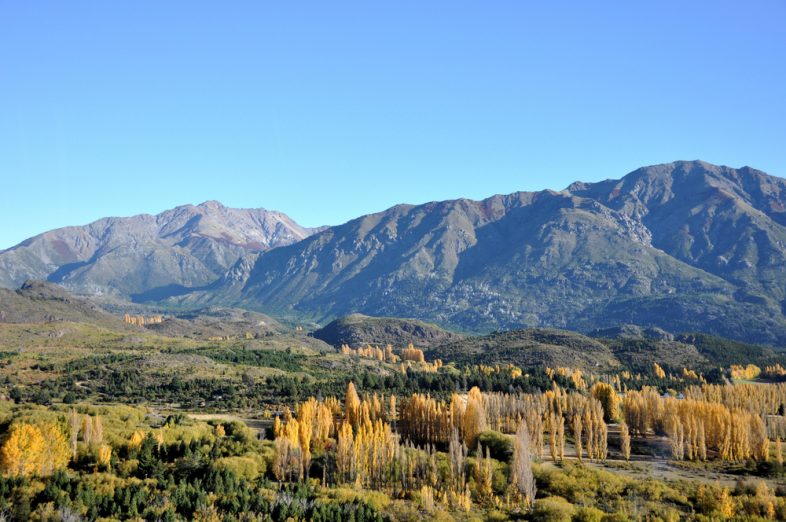
You can use any MasterCard, Visa, American Express, or Discover card in Argentina, although American Express and Discover are less widely accepted.
During Argentina’s currency crisis, the country became more of cash based society, so you should certainly carry cash just in case you need to make a purchase from a merchant that doesn’t accept credit cards.
And while the exchange rate you will receive from your credit card is much better than it used to be, it still might be possible to exchange money informally at a better rate that the official one.
If you exchange money outside of a bank, you should only do so with someone referred to you by a trusted person, such as a friend, family member, or your hotel staff. And even then, you have to be especially concerned about receiving counterfeit currency.
Counterfeit bills tend to be larger bills and are found more often in Buenos Aires than in other parts of the country.
Also, make sure you bring newer American Dollars in good condition since many are hesitant accept worn or torn currency.
As with any travel outside of the United States, you will want to use a card that has no foreign transaction fees , like the ones I mentioned in this article.
Sadly, many credit cards still impose a 3% foreign transaction fee on all charges processed outside of the United States.
Argentina is a safe, fun, and affordable destination for Americans.
By using the right credit card to earn points and miles, you book an award flight there and have even more money left over to enjoy the country.
More: MyBankTracker's Best Credit Cards for Travelling
You might also like
Advertiser Disclosure:
We believe by providing tools and education we can help people optimize their finances to regain control of their future. While our articles may include or feature select companies, vendors, and products, our approach to compiling such is equitable and unbiased. The content that we create is free and independently-sourced, devoid of any paid-for promotion.
This content is not provided or commissioned by the bank advertiser. Opinions expressed here are author’s alone, not those of the bank advertiser, and have not been reviewed, approved or otherwise endorsed by the bank advertiser. This site may be compensated through the bank advertiser Affiliate Program.
MyBankTracker generates revenue through our relationships with our partners and affiliates. We may mention or include reviews of their products, at times, but it does not affect our recommendations, which are completely based on the research and work of our editorial team. We are not contractually obligated in any way to offer positive or recommendatory reviews of their services. View our list of partners.
MyBankTracker has partnered with CardRatings for our coverage of credit card products. MyBankTracker and CardRatings may receive a commission from card issuers. Opinions, reviews, analyses & recommendations are the author’s alone, and have not been reviewed, endorsed or approved by any of these entities.
Two Sisters Abroad
two sisters exploring the world
17 Essential Argentina Travel Tips For Your Vacation

Hi all! Thinking of visiting the beautiful country of Argentina? Wondering what to expect when you arrive? Keep reading for your 17 essential Argentina travel tips.
I love traveling in Argentina and exploring all of the amazing things the country has to offer. After spending many weeks in Argentina, and talking with tons locals, I’ve complied a list of my best tips and pieces of advice.
Let’s get right into your essential Argentina travel tips for your vacation!
17 Argentina Travel Tips
Money + exchange rate, 1: bring cash.
Although most American credit/debit cards will work in Argentina, you will get the best exchange rate with cash. Bring dollars, pounds or euros and exchange them upon arrival.
2: Don’t rely on credit cards
Many larger shops and restaurants will accept credit cards, but it’s not guaranteed. Additionally, in the artisan markets it is less likely that you will be able to use a credit card – although occasionally it is possible. That being said, you likely won’t get as favorable an exchange rate with a credit card as it will be the “official” bank exchange rate and not one of the “unofficial” rates (see below) . Also, it is likely that your credit cards won’t always work, even if you’ve notified your credit card company about your travel plans. Sometimes my Discover Card worked, more than often it didn’t. My Mastercard Debit card would only run as a credit card, never debit, and I could almost never use American Express. Luckily, I anticipated this and brought cash. Visa and Mastercard are the safest bets for credit cards, as they will be more widely accepted than Discover and American Express.
3: There is more than one exchange rate
This is another major reason why you need to bring cash. If you take money out of an ATM you will get the “official” exchange rate – currently 1USD to 102ARS.
This is a good exchange rate, however, the unofficial exchange rate is much better, around 200ARS for 1USD.
4: Be strategic about exchanging money
If you exchange your money at a bank, tourism center, or other official change bureau, you’ll get the official exchange rate – currently around 102ARS to 1USD. However, if you exchange your money at some hotels or through other unofficial exchange locations, you’ll get a much better rate.
I recommend asking locals where they recommend exchanging money, as they will know the unofficial exchange locations.
5: Be careful exchanging money
Okay, this is obvious, just because you’ll get a better exchange rate by exchanging your money through non-official channels doesn’t always mean you should.
For example, while walking down Calle Florida in Buenos Aires, a major tourist shopping street, tons of people will yell out to you “Change/Cambio.” It is definitely risky to follow these random people on the street and let them exchange your money – and I don’t recommend it.
Instead, look for a local business that exchanges money, or ask your AirBnb/hotel concierge where you should go.
6: You can often pay in dollars
In Buenos Aires, especially, you can very often pay in dollars. Often, stores will have signs saying that they accept dollars, and they will list their own exchange rate. This rate will almost always be better than the official exchange rate.
Additionally, in the artisan markets across the city it will likely be possible to pay in dollars, and some vendors even request USD as they know that they can get a high, unofficial exchange rate for it.
7: ATM fees are high – and often don’t work
This is just another reason why you should bring cash. I tried to take money out of multiple bank ATMS and was denied every single time – probably fifteen times total.
I had alerted by bank that I was traveling and there was no problem with my card, the ATMS just wouldn’t accept it. Additionally, the lines at ATMs, especially in Buenos Aires, are often super, super long. Finally, if I had taken money out from ATMs, there was almost always a $7ish fee per transaction – which is in addition to any bank fees from your bank.
8: Argentina is cheap and expensive
Argentina, in general, is not an expensive location for tourists. Food, especially, it pretty cheap and you can buy beers at a bar for way under a dollar. Taxis and Ubers also will be inexpensive.
However, that being said, clothing and electronics are definitely on the expensive side – even by U.S. standards.
Don’t go to Argentina expecting to find clothes at a good price – it’s possible, but not common. Shop for local goods and artisan items, as these will be relatively inexpensive, but I definitely don’t recommend buying anything that’s imported.
9: Pickpocketing is common
This is especially true in Buenos Aires. Use common sense and don’t walk around with your wallet in your back pocket, looking at your phone, or with expensive jewelry on your wrist.
Common U.S. items, like iPhones, are expensive and difficult to get in Argentina – so robberies of these items are common. Don’t ever leave your phone or wallet sitting on a table while you’re in a restaurant or bar, especially in major touristy areas.
10: Don’t skip Buenos Aires
There are so many blogs and writers who post about how dangerous Buenos Aires is. This is a massive overgeneralization.
All cities have less-safe areas, but Buenos Aires as a whole is not unsafe. Use common sense to avoid petty robberies and pickpocketing – but don’t skip the whole city due to unnecessary fear. In order to avoid getting yourself in dangerous situations, always keep your valuables out of sight, pay attention to where you’re walking, and don’t draw unnecessary attention to yourself.
11: Use Uber
Uber is generally the safer option within Buenos Aires, rather than taxis. This is due to the fact that all Uber rides and transactions are tracked on the app and there won’t be disputes about fare. This being said, Uber drivers will probably make you sit in the front seat so that they are not easily identified as Ubers. Taxi drivers have been known to act aggressively with Uber drivers, as they are affecting their business. Because of this, often Ubers will try to act like “regular” cars who are just driving around friends or family.
Travel Within Argentina
12: public transportation is reliable in buenos aires.
The public transportation system in Buenos Aires is really good! You can take subways, buses and trains to get around the city and to the suburbs.
I found the whole public transportation system easy to navigate, and very reliable.
13: Download the moovit app
This map app will give you public transportation directions to your destinations around Argentina. It’s very helpful and will tell you how long you’ll need to wait for the next bus/train to your location.
14: Get a SUBE card
This card is for taking public transportation, and it will allow you to pay a lower fare. You can buy the cards at the Subte (subway) stations, at Tourist Assistance Centers and at many small, local kioskos (corner stores).
SUBE cards can be used for buses and subways as well as for trains to Buenos Aires suburbs and other areas in the province of Buenos Aires. The cards are refillable and cost about 75 cents each.
- Buses come regularly and fares are around 20 cents . A crazy good deal.
- A subway fare is about 25 cents .
- A train fare, to the suburbs of Buenos Aires, is less than 50 cents .
Food and Restaurants
15: it’s possible to find vegetarian food.
Argentina is famous for its steak, but that doesn’t mean that there aren’t any vegetarians.
In Buenos Aires, especially, you’ll be able to find tons of vegan and vegetarian restaurants. Additionally, at almost every empanada shop there will be veggie options (caprese, cheese, corn, etc.)
In Patagonia it was a little harder to find vegetarian food, but it really wan’t difficult at all – don’t worry.
16: Tip at least 10% in restaurants
10% is considered normal for tipping in restaurants.
17: Tap water is generally safe in Buenos Aires
If you’re worried about this, it’s always safer when traveling to drink bottled water, but I really hate using plastic bottles. When in doubt ask your AirBnb host or your hotel concierge if the tap water is safe to drink!
I hope you found my Argentina travel tips and advice to be helpful! I highly recommend planning a trip to Argentina. It is such an interesting country with so many amazing sights to see, food to try and experiences to take part in.
If you have any questions, or anything you would like to add in this post, be sure to let me know in the comments below!
Don’t forget to check out my other Argentina posts, filled with itineraries and guides for Buenos Aires , Patagonia and day trips to Uruguay .
Lastly, I appreciate you sharing this post with someone you know who is planning a trip (or should plan a trip!) to Argentina!

You may also like

Vermont Spring Lookbook

The Best Photo Locations in Greenwich Village, NYC

5 Amazing Bookstores in NYC
12 comments.
Great tips! I didnt make it to Argentina when i was in South America so I’ll have to go back one day!
I haven’t really traveled many places south of the border, but would like to begin exploring the possibility. Great tips.
These are such great tips. We’ve totally spaced on researching currency before. Luckily my sister was with us and able to spot us some cash, since we only had a credit card.
I’m really hoping to visit Argentina in 2022, so this was very helpful. Fingers crossed it works out ❤️
I haven’t had a chance to visit Argentina yet but it’s on my list. Thanks for all these great tips!
Enjoyed this. We made the mistake of assuming we would be able to easily get money out of ATMs in Argentina yet we found that only certain banks accepted our cards. It was a bit of a panic on the first day when we couldn’t find anywhere to get cash, so YES! Definitely bring cash!
I loved my trip to Argentina and your tips are definitely spot on. I felt safe in Buenos Aires and would whole heartedly agree it’s not to be missed. Just like any other city, be aware of your surroundings!
Definitely some great and useful tips there. I realised just how important to have cash on you after I spent 3 months in Mexico. I got used to paying by card for everything in the UK and I never had cash on me anymore. But over here it’s super important.
thanks for this helpful piece of advice! So many useful details! Money Tips and Exchange Rates are always crucial for travel planning!
I loved Argentina, and look forward to returning some day! Will pin for then!
Great tips! Hope to visit Argentina one day and do some hiking!
Thanks for sharing these tips – they are incredibly helpful! One can often get so excited about travel planning that they forget about these smaller yet important details.
Leave a Reply Cancel reply
Your email address will not be published. Required fields are marked *
Notify me when new comments/replies are added to this post.
Nomadic Matt's Travel Site
Travel Better, Cheaper, Longer
Argentina Travel Guide
Last Updated: January 19, 2024
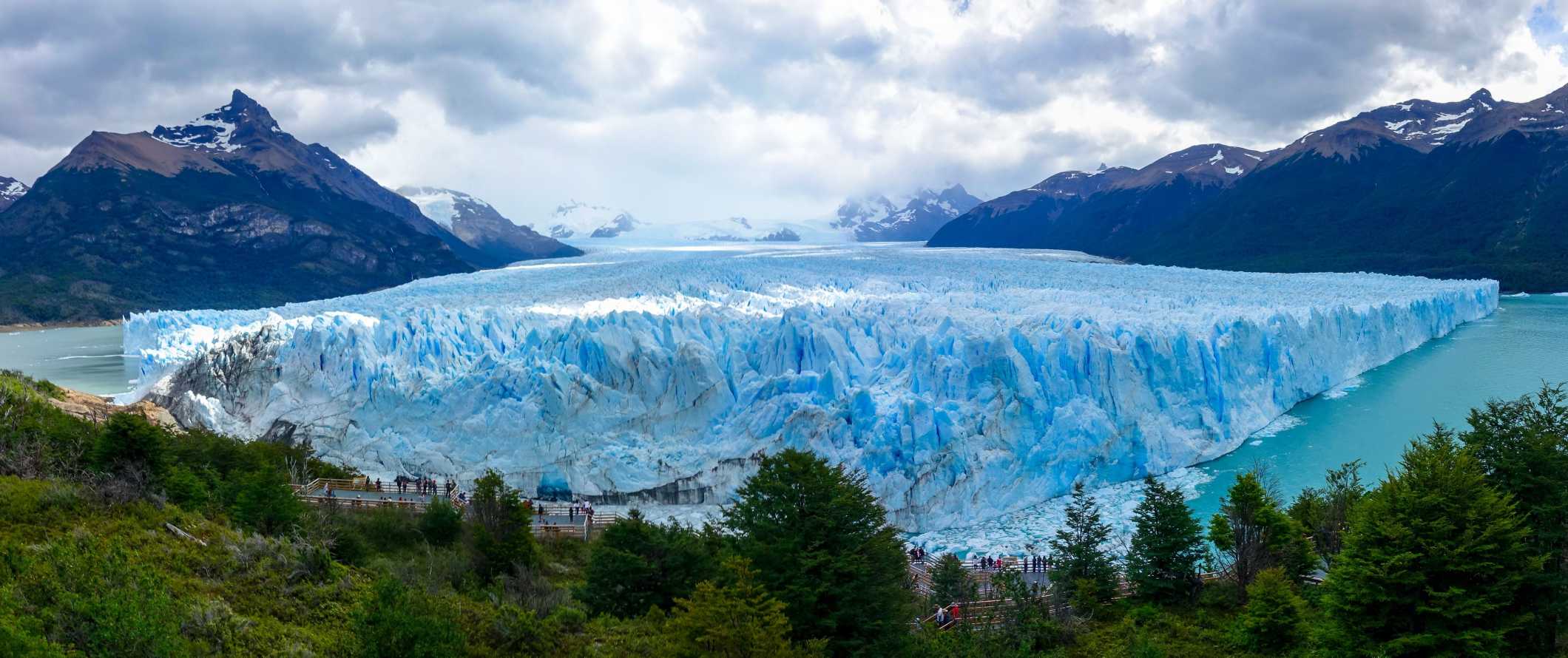
Argentina is one of the most popular countries to visit in South America. Whether you’re backpacking the entire country or just visiting on a short holiday looking to drink wine, eat steak, and do some hiking, Argentina will not disappoint you. I love the place to death.
From the relaxed café culture of Buenos Aires to the natural beauty of the massive Iguazu Waterfalls, the stunning Perito Moreno glacier to the charming vineyards of Mendoza , Argentina is a wonderfully beautiful country with world-class landscapes to match the delicious steaks, award-winning wine, and lively and welcoming people you’ll find here.
Argentina blew away all of my expectations.
This travel guide to Argentina can help you plan your trip, stay safe, stay on a budget, and ensure you make the most of your visit here.
Note : Argentina suffers from incredible inflation and prices vary widely and increase without notice. The prices here might be accurate as of the day we publish but could be dramatically different by the time you get there. Keep that in mind as you plan your expenses.
Table of Contents
- Things to See and Do
- Typical Costs
- Suggested Budget
- Money-Saving Tips
- Where to Stay
- How to Get Around
- How to Stay Safe
- Best Places to Book Your Trip
- Related Blogs on Argentina
Click Here for City Guides
Top 5 things to see and do in argentina.
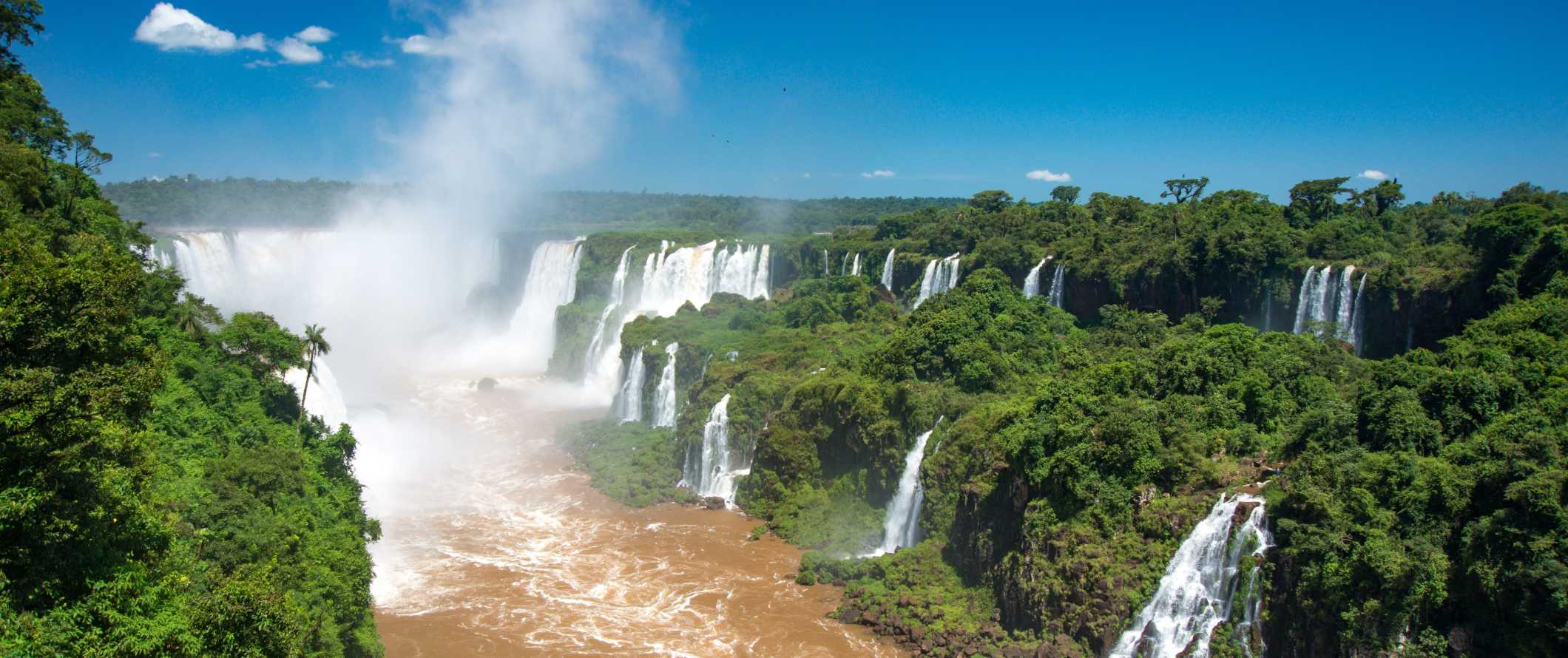
1. Enjoy the culture of Buenos Aires
Nicknamed the “Paris of South America,” Buenos Aires is an amazing and fun city with a lot of culture, fantastic nightlife, food, and shopping. Stay in the trendy Palermo neighborhood and walk the tree-lined streets, visit the Museum of Latin American Art in Buenos Aires (aka MALBA), and explore Palermo Soho which has a more youthful vibe and is crammed with cool shops and boutiques.
Additionally, on the southern border of Palermo is La Recoleta Cemetery, one of the most atmospheric graveyards on the planet and home to several famous Argentines, including Eva Peron, several past presidents, patriots, poets, and other VIPs of Argentine history. El Museo Nacional de Bellas Artes, the National Museum of Fine Arts, is nearby as well. Opened in 1895, the museum houses works by Goya, Monet, Rubens, Rembrandt, Van Gogh, and many other masters.
2. Marvel at Iguazu Falls
With 450,000 cubic feet of water thundering down the 275 cascades every second, it’s easy to see why this massive waterfall is so popular. The water plunges below in a powerful and sensational flurry of white water and mist with rainbows stretching above it all. The uneven cascades are also some of the tallest in the world, as they measure between 62-85 meters (210-269 feet). A sturdy wooden walkway allows visitors to wander out to get a closer, face-to-face look at the falling water. Some might remember the falls played a supporting role in the films Indian Jones and the Kingdom of the Crystal Skull, Captain America: Civil War, and The Mission, among many others.
You can find several types of guided trips leaving from Buenos Aires or just go on the local bus yourself. Stay in Argentina and get drenched on a boat ride around the falls or spring for a tour that includes Brazil on the opposite shore. The view from Brazil is arguably better, since you’re on a narrow ridge surrounded by the falls in Argentina. The entry fee for Iguazú Falls National Park on the Argentine side is 20,000 ARS.
3. Wander Salta
Located in the northwest of the country, Salta is a small city with outstanding museums, plaza-side cafes, and a lively folk music tradition. The colonial architecture of the city is well preserved here too. The most popular museum is Museo de Arqueología de Alta Montaña (MAAM), opened in 2004 for the mummies of three children sacrificed by the Inca and discovered in 1999. Don’t miss the Teleférico San Bernardo, a cable car that glides through the air to a hilltop with a gorgeous view of the whole city. A round-trip ticket for San Bernardo is 8,000 ARS.
4. Learn the tango
Argentina is famous for its national dance, the tango. You’re bound to run into it everywhere you go with people quite literally practicing in the streets. Throughout the country there are studios that offer lessons if you want to learn and free public places to watch the locals dance away. In Buenos Aires, splurge on a tango show at the historic Teatro Tabarís or Gala Tango. A more budget option is the outdoor shows in Plaza Dorrego, where the best dancers can be found every Sunday afternoon.
5. Explore Mendoza
Other things to see and do in argentina, 1. take the train to the clouds.
Sure, it’s a train built for tourists and super overpriced, but taking this train through the clouds and lush forest is so breathtaking I don’t mind. This is a 400-kilometer (250-mile), 16-hour round trip into the Andes from the town of San Antonio de los Cobres. You can buy the train ticket with the bus ride between Salta and San Antonio de los Cobres included, or via just the train. Consider buying just the train ticket so you can spend a little time checking out the Andean culture (and llamas) in San Antonio. As the train climbs to 4,200 meters (13,779 feet), you’ll be rewarded with spectacular views overlooking mountains, forests, and valleys. It only operates seasonally and on specific days of the week, so be sure to check the schedule before you go. The website only shows prices once you pick a date for the reservation.
2. Climb Cerro Aconcagua
At almost 7,000 meters tall (23,000 feet), Cerro Aconcagua is not only the country’s highest mountain but also the highest in the Western Hemisphere. This climb isn’t for the faint-hearted as it’s estimated to take a couple of weeks to acclimatize to the altitude and reach the summit. However, it’s a challenging hike, not a technical climb. Many hikers set their sights on part of the mountain, without risking the dangers of oxygen deprivation near the summit. If you love a challenge and are a practiced hiker, it’s an adventure worth considering! Due to the instability of the peso, many trekking companies post prices in USD. Guided summit hikes cost around $5,000 USD while an 8-day trek around the mountain (not to the summit but around the various camps) costs around $2,000 USD. The most popular option is a 4-day hike around the mountain, which costs $700 USD per person. Not into hiking? Nearby Los Horcones Lake is only 2,900 meters (9,514 feet) above sea level and a popular fishing destination.
3. Explore Valle de la Luna
Translated as “Valley of the Moon,” this dramatic landscape dates to the Triassic period. Winds and rain have carved the rocks into strange formations that give this place the look of a lunar landscape. Despite the arid conditions, the area is great for wildlife spotting as it’s home to foxes, owls, armadillos, condors, and guanacos. A wild cousin of the llama, guanacos will give your landscape photos a decidedly South American flair. The unique geological formations and fossil beds have earned its status as a UNESCO World Heritage Site. Don’t miss the Museo de Sitio William Sill, built over impressive dinosaur fossils where you can watch archeologists at work.
The best way to explore the park is via a rental car. Once you have that, you can take the 25-mile circuit tour, stopping at five different points along the way, each one offering stunning sights and views of the park. The circuit should take approximately three hours. There are also hikes through the park. One of the most popular is the trek up to Cerro Morado, the tallest mountain in the park at nearly 1,900 meters (6,000 feet). The walk takes about three hours and, once at the top, offers wow-inducing views of the natural landscape below. Admission to the park is 5,000 ARS.
4. Hike on Perito Moreno Glacier
Located within the expansive Los Glaciares National Park is the impressive Perito Moreno glacier. At almost 4,570 meters (15,000 feet) wide and 61 meters (200 feet) tall, it’s one of the coolest sights I’ve ever seen. You can hike on the glacier (which is an epic experience) or walk on the metal platforms constructed a stone’s throw from the massive wall of ice. You’ll need a licensed guide, ropes, and crampons to hike on the glacier but you can take the bus from El Calafate and do the platform walk on your own. Boat rides to Perito Moreno get you even closer and can include other nearby glaciers like Spegazzini and Upsala. Depending on the season, a full-day tour including a boat ride costs around 99,000 ARS. Austral summer, from December to February, has higher prices.
5. Day trip to San Rafael
Located a few hours from Mendoza, this tiny little town is a wonderful place to see wineries. Try the local Malbecs and other reds that go perfectly with an Argentine asado. Like Mendoza, this is a great place to go on a bike ride through the picturesque vineyards. Don’t miss out on the nearby stunning Atuel Canyon, where you can go whitewater rafting in the summer. San Rafael is a charming little place to relax and slow down to enjoy the local pace of life. A bus from Mendoza to San Rafael costs 2,500 ARS for a one-way ticket.
6. Visit Ushuaia
Ushuaia is the most southerly city in the world and the largest city in Tierra del Fuego. This is a very popular town for travelers coming to the end of their South American journey, or for those traveling to Antarctica. This is the launch point for all Antarctica cruises, as the continent is only 1,100 kilometers (680 miles) away. Plan at least three days here to go hiking in the national park, walk among the penguins on Hammer Island, and try one of the local tea houses. The most popular is La Cabaña, at the foot of the Martial Glacier ski resort. If you’re there in winter, visit one of the three local ski resorts or go on a dog-sledding tour. Overall, it’s an adventure travel hub that deserves a few days before or after your other adventures.
7. Go whale watching
From June to December, whale watching season in Patagonia is at its peak as the whales make their way to the coast to mate. Whale watching is an expensive excursion, but it’s well worth it during migration time as you’re guaranteed to spot a few whales. The Valdes Peninsula is the best place to go on a tour. Only six companies are allowed to operate here so as not to disturb and overwhelm the whales. Expect to see orca, humpback, southern right whales, and blue whales. This is a remote area of Patagonia and the best place to stay nearby is Puerto Madryn. Due to the instability of the Argentine peso, most tour agencies post prices in US dollars. A full day wildlife and whale watching tour costs $145 USD.
8. Discover Quebrada de Humahuaca
The Quebrada de Humahuaca is a 155-kilometer-long (96 mile) valley carved out by the Rio Grande. The deep valley is covered in unique rock formations and has been populated for at least 10,000 years, making the area rich in ancient Incan history and culture. Visit the ancient Inca ruins at Tilcara and see just how much Andean culture still permeates the area. Explore the colonial streets and architecture of the tiny town of Humahuaca, with its bright orange mountain backdrop or walk around behind the mountain on an easy one-hour hike to see dramatic red and purple cliffs.
9. Visit Cajon del Azul
Located in El Bolson, a bohemian town near the Andes Mountains, The Blue Canyon boasts beautiful translucent turquoise waters flanked by rustic suspension bridges, alcoves, and cliffs. It’s a little more deserted than other nature reserves in Argentina, though it’s growing in popularity amongst climbers and fly fishers. If you go, it’s worth spending at least a few days in this area taking advantage of all the outdoor activities.
If you want to hike, there are a myriad of trails you can take, all of varying degrees of difficulty and length. The trails also have the most amount of refugios, or huts, than anywhere else in South America. This means you can plan a single-day trek or a multi-day hike, going from one hut to another for several days until you want to trek back to El Bolson. Before you head out on a hike, though, make sure you stop into the Mountaineering Information Office, or Oficina de Informes de Montañas, to get information about the hike you’re doing. It’s the best way to prepare for a trek here. There’s also a Tourist Information Office that should be helpful too.
10. See Casa Rosada
Dominating the Plaza de Mayo in Buenos Aires is Casa Rosada, the Office of the President and arguably the city’s most notable landmark. The distinctive pink color is said to be due to the mixing of cows’ blood into the paint, to preserve the building. First Lady and labor activist Eva Perón (aka Evita) famously addressed crowds of workers from the building’s balcony (there’s a 1996 film starring Madonna based on her life).
Easily accessible on the city’s Subte metro system, the area around the Casa Rosada is worth visiting for its colonial architecture and famed masterpiece mural by Mexican artist David Alfaro Siquieros in the Casa Rosada Museum. There are, in all, 11,000 pieces of art in the museum. Admission is free but you must register and pick a time and date for your visit.
11. Stroll La Recoleta Cemetery
It might seem a bit morbid to visit a cemetery for pleasure, but Recoleta is one of the city’s most visited attractions. The cemetery is the final resting place of many of the city’s most notable citizens, including Eva Perón and the Paz family. Also worth seeing is the tomb of Rufina Cambaceres, who was tragically buried alive according to legends. It’s open daily from 8am-6pm. Afterwards, walk along Calle Vicente Lopez on the southwest side of the cemetery. It has become one of the hotspots in Buenos Aires for micro-breweries and is a great place to rest your feet after all the walking through the cemetery.
12. Discover San Ignacio Miní
Located in San Ignacio, these 17th-century mission ruins are the most complete in Argentina, with a significant amount of carved ornamentation still visible. Constructed in the Spanish Baroque style and heavily influenced by indigenous designs, the ruins are a beautiful and distinctive reddish color. The visitor center has a lot of background information on the fascinating history of the old mission, and the ruins have interactive panels for more information as well. San Ignacio is the perfect place to stop on your way to or from Iguazú, which is only four hours away. The town is on the Paraná River, near Posadas, where you can easily hop the border to Encarnación in Paraguay. Admission is 1,000 ARS.
13. Take a dip in the Termas de Colón
Located north of Buenos Aires not far from the border with Uruguay, the hot springs here have been a hot secret with in-the-know Porteños (people from BA), for many years. There are 10 different pools to choose from, each one a different temperature and health benefits. If you have kids the Termas de Colón also features kiddie pools and various water slides. The drive from Buenos Aires takes about four hours, making this either a very long day trip or a multi-day trip to the north to relax in the charming town of Colón.
14. Attend a fútbol match at La Bombonera
Visiting the legendary soccer stadium of Boca Junior, one of Buenos Aires’ two professional teams, in the La Boca district is a local experience you won’t want to miss. If they’re playing cross-town rivals, River Plate, even better, but if you’re in town during the soccer season, go to see La Boca playing any team. It’s a lively and sometimes crazy experience. Expect to spend a couple hundred dollars on tickets if you want to see a match. There are also tours of the stadium available too, though those also aren’t cheap at around 82,000 ARS.
15. Browse for books at a world-class bookstore
In Buenos Aires’ Barrio Norte, you’ll find El Ateneo Grand Splendid. Housed in an old theater from 1919, this bookshop has plenty of remnants left over from its days in the performing arts, such as murals on the walls and ceilings, and even balconies. The books on the shelves are mostly in Spanish, though there’s a small English-language section. That said, shopping for a good read here is not really the point. Just stroll around and admire the high ceilings and ornate design of the place. It’s one of the most beautiful bookstores in the world.
For more information on specific cities in Argentina, check out these guides:
- Mendoza Travel Guide
- Buenos Aires Travel Guide
Argentina Travel Costs

Accommodation – Hostels are widespread throughout the country. Expect to pay 15,000-30,000 ARS for a 6-8-bed dorm room in Buenos Aires, depending on the neighborhood. In smaller towns like Mendoza, expect to pay 8,000-20,000 ARS depending on amenities. Private rooms in a hostel with a shared bath are generally double the price of dorm rooms, costing 20,000-50,000 ARS per night.
Free Wi-Fi is standard and most hostels also have self-catering facilities.
Hotels cost 40,000-60,000 ARS and always include free Wi-Fi, though other perks are generally pretty limited. At a two- or three-star hotel in Argentina you can expect TV (sometimes with international channels), daily housekeeping, bathroom toiletries, and, in some cases, an in-house restaurant, to varying degrees of quality.
Airbnb no longer posts prices in Argentine pesos, but averages $20-$50 USD per night for a private room and $30-$80 for an entire apartment.
Camping is widespread all around the country (including the world-famous Patagonia region), especially near the national parks. Expect to pay around 12,000 ARS for a basic plot for two without electricity.
Food – Argentine food is a mix of Mediterranean influences: first from Spanish colonizers, and later European immigrants in the 19th and 20th centuries, especially from Italy and Spain. Empanadas, pizza, polenta, and pasta all heavily feature in Argentine cuisine.
Argentines are famous for their asado (barbeque) and tremendous consumption of beef, especially steak and ribs. Tomatoes, onions, lettuce, eggplants, squashes, and zucchini are the most common vegetables. Dulce de leche , a caramel sauce made from condensed milk, is a popular sweet.
Yerba mate is the favorite national drink. It’s a caffeinated herbal drink that is prepared in a traditional gourd. It is consumed in social settings by passing around the gourd and its accompanying metal straw.
Overall, food is fairly expensive in Argentina, especially in popular resort and outdoor adventure towns. Take advantage of eating breakfast and lunch specials to get the most out of your money. Breakfast deals go for 1,000-2,000 and usually consist of a coffee and two media lunas, which are like a bready croissant.
Lunch specials vary greatly but are generally around 3,500-4,000 ARS. Meals at a cheap cafe begin at around 2,000-3,000 ARS for a light lunch of a sandwich or salad.
In terms of street food, empanada, choripán (sausage on bread) stands, and local hole-in-the-wall burger and pizza shops are economical and tasty. Empanadas go for around 700 ARS each, choripán for 1000 ARS, and fast food pizza or burgers for around 1500-2000 ARS. Fast food (think Mcdonald’s) is around 2,000 ARS for a combo meal.
In major cities, a dish at a Chinese takeout restaurant is around 8,000 ARS, while a dish at a sit-down Indian restaurant is around 8,000-12,000.
At a nice traditional Argentinian steakhouse, expect to pay 20,000-25,000 ARS for a good steak and wine. At more casual restaurants, steaks cost around 10,000-15,000 ARS, while vegetable-based pasta dishes cost 7,000-8,000 ARS.
In terms of drinks, beer is around 3,000 ARS while a glass of wine is also 3,000 ARS. A cocktail is around 4,000-5,000 ARS and a cappuccino is 3,000 ARS.
If you’re going to grocery shop, expect to spend about 25,000-35,000 ARS per week for groceries, including bottles of wine. This gets you basic staples like rice, beans, pasta, seasonal produce, and some meat.
Backpacking Argentina Suggested Budgets
On a backpacker’s budget, expect to spend at least 31,500 ARS per day. On this suggested budget, you’re staying in a hostel dorm, eating out at the cheap food stalls, cooking most of your meals, using public transportation, limiting your drinking, and doing mostly free activities like hiking and taking free walking tours.
On a mid-range budget of at least 70,000 ARS per day, you can stay in an Airbnb, hotel, or private hostel room, enjoy a few drinks and eat out more, take the occasional taxi, and do whatever tours and activities you want, such as wine tours and dance lessons.
On an upscale budget of at least 135,000 ARS per day, you can stay in a hotel, eat out for all your meals, drink more, go hiking in Patagonia, fly between cities, and do whatever else you want to do. This is just the ground floor for luxury though. The sky is the limit!
You can use the chart below to get an idea of how much you need to budget daily, depending on your travel style. Keep in mind these are daily averages — some days you’ll spend more, some days you’ll spend less (you might spend less every day). We just want to give you a general idea of how to make your budget. Prices are in ARS.
Argentina Travel Guide: Money-Saving Tips
While Argentina’s hyperinflation works in most travelers’ favor, it makes certain things in this country more expensive. Tours, food, and alcohol add up quite a bit. There’s a lot of price instability in the country. Here are a few hacks to cut down your costs and not let inflation ruin your fun:
- Use discount cards – Student and teacher discounts can get you incredible savings. You can also use the La Nacion Club and La Nacion Premium Club Cards, associated with La Nacion Newspaper, for discounts. Every week, the La Nacion Club Card website lists participating establishments that give discounts to cardmembers. This is good for travelers spending a long time in the country as you have to sign up for the newspaper.
- Hitchhike – While not common in the north of the country, if you’re in Patagonia, you’ll see many locals and tourists alike hitchhiking, as long-distance buses in that part of the country can be very expensive and infrequent. It’s simply more convenient to hitchhike. This common way to get around is highly recommended.
- Travel off-season – March-June and September-November are the low season when you can find cheaper accommodations and enjoy fewer crowds at attractions.
- Find the cheap eats – Empanada, choripán (sausage on bread) stands, and local hole-in-the-wall burger and pizza shops are your best options for cheap eats. It’s not the healthiest food, but it’s economical and tasty!
- Rent a bike – You can rent bicycles from hostels and rental shops for around 12,00 ARS per day in most major cities. This is especially useful when you’re in Mendoza’s wine country and you’re trying to get from winery to winery.
- Bring a tent – As you start to travel south to Patagonia, accommodation costs get expensive. Hostels are often 20,000 ARS or more a night here (as opposed to as cheap as 10,000 ARS a night in Buenos Aires). Look for camping opportunities as often as possible. When you aren’t in the national parks (where you can obviously camp), many hostels let you pitch your tent for a small fee.
- Stick to wine – 2,000 ARS bottles of wine in the supermarket is a phenomenal deal. Grab a bottle, drink it up. It’s really good too!
- Pack a water bottle – The tap water here is generally safe to drink so bring a water bottle with a filter to save money and reduce your single-use plastic usage. My preferred bottle is LifeStraw as it has a built-in filter to ensure your water is always clean and safe.
- Explore the outdoors – Hiking is free, and throughout the country, you’ll find plenty of opportunities to enjoy this and other outdoor activities since Argentina is blessed with many city parks and nature reserves where you can spend the day wandering around and relaxing. (And, of course, there are a plethora of national parks where you can do multi-day treks!).
- Don’t fly domestically – Thanks to a tax on foreigners, airfare in Argentina for non-residents is quite expensive. Unless you are in a rush, don’t fly. Take the overnight buses. It’s slower but affordable (and often a lot more comfortable).
- Dance for free – If you find yourself in Buenos Aires on a Sunday, you can find free tango events in San Telmo. (On Monday nights, there’s the famous La Bomba de Tiempo, a music and dance event that is well worth the minimal price for admission.)
- Take a free walking tour – There are a number of free walking tours in major cities. They are the best way to get the lay of the land on a budget and connect with a local guide. Just remember to tip your guide at the end. Two companies to try out in the capital city are Buenos Aires Free Tour and Free Walks Buenos Aires.
Where to Stay in Argentina
Looking for budget-friendly accommodation? Here are some of my suggested places to stay in Argentina:
- Milhouse Hostel (Buenos Aires)
- Up Viamonte Hotel (Buenos Aires)
- Sabatico Travelers Hostel (Buenos Aires)
- Villaggio Hotel Boutique (Mendoza)
- Gorilla Hostel (Mendoza)
- Alto Andino Hotel (Ushuaia)
- Cruz del Sur Hostel (Ushuaia)
- Antarctica Hostel (Ushuaia)
How to Get Around Argentina
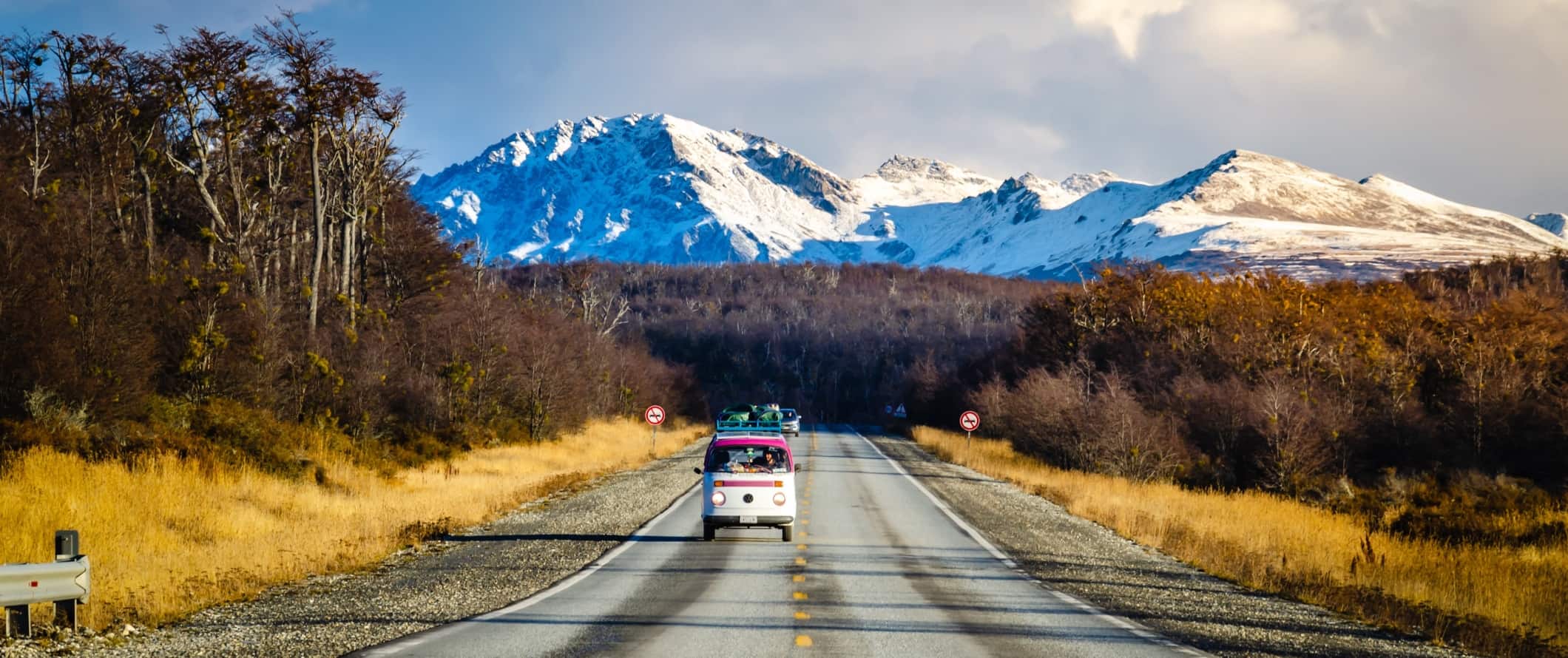
Public transportation – Buenos Aires is the only city in Argentina with a subway system (the Subte). The subway runs from 5:30am-11:30pm on weekdays, 6am-midnight on Saturdays, and 8am-10:30pm on Sundays.
Public buses are the most common way to travel within the cities. In Buenos Aires, a one-way fare is around 1,000 ARS per trip. In Mendoza, fares start at 800 ARS.
In Buenos Aires, Mendoza, and Mar del Plata you need a transit card to use the public transit, while smaller areas take cash. You can find these cards at kiosks all over the place.
Taxis – Taxis are very affordable in Argentina. Prices start around 500 ARS and go up by around 300 ARS per kilometer. That said, public transportation can usually get you anywhere you need to be so you can likely skip the taxis here.
Buses – Argentina boasts an outstanding short and long-distance bus network. It is common to have food served on board as well as Wi-Fi and alcohol on long-distance buses. For example, the ride from Buenos Aires to Mendoza takes about 14.5 hours and tickets begin at 10,000 ARS. A 10-hour trip from Bariloche to El Calafate (in Patagonia) starts from 20,000 ARS, while the bus from Buenos Aires to El Calafate is 50,000 ARS.
A “shorter” journey like Mendoza to Salta in 7 hours costs about 35,000 ARS. You can take the overnight bus and then save on accommodation since you’ll be sleeping on the bus.
Flying – Flying around South America isn’t very cheap, and Argentina is no exception as fares are taxed highly for foreigners (it subsidizes cheap fares for residents). However, it might be worth it for you if you’re short on time as those 14-hour bus rides are not an efficient way to travel. Argentina’s two most popular airlines are Aerolíneas Argentinas (the domestic carrier) and LATAM.
You can fly from Buenos Aires to El Calafate for 340,000 ARS return, or Buenos Aires to Bariloche for 190,000 ARS return. You’ll get better deals the further out that you book your tickets.
Train – Argentina’s rail system only goes to three places: Buenos Aires, Cordoba, and Rosario. The train from Buenos Aires to Cordoba costs about 28,400 ARS. There are also train journeys aimed specifically at travelers, like the epic Train to the Clouds that begins in Salta and passes through the Andres. It’s one of the highest railways in the world. There’s also La Trochita, the Old Patagonian Express between Esquel and El Maiten for 30,000 ARS.
Hitchhike – Argentina is easy and safe for hitchhikers. You can find rides throughout the country, and Argentines are naturally curious about foreigners. There’s a good chance you’ll end up crammed into a car with an entire family! Hitchwiki has information on hitchhiking in Argentina if you want to give it a try.
When to Go to Argentina
Argentina is enormous. The best time of year to visit entirely depends on what regions you plan on traveling around.
Argentina’s spring is from September to November. This is one of the best times to visit overall (although it’s still very cold in Patagonia). Average temperatures range from 14°C (57°F) in the center, 8-14°C (46-57°F) in Patagonia, and about 20°C (68°F) in the north.
Summer is from December to February. This is the best season for spending time in the Andean mountains. It’s also the best time to travel to Tierra del Fuego, although there still might be snow. The north is a lot warmer, and Buenos Aires can get hot and sticky. Temperatures can get as high as 26°C (79°F).
Autumn (March-April) is another great time to visit, especially in the San Juan and Mendoza regions for the wine harvests. Temperatures here are 6-14°C (42-58°F). Patagonia is stunning this time of year with its bright autumn colors as well.
Winter is from June to August when temperatures dip to 8–13°C (46–55°F). This is the ideal time to visit if you’re a skier hoping to hit up the ski resorts. It’s not a great time for visiting Patagonia, however; bad weather can leave you stranded, and a lot of places are closed from Easter to October.
How to Stay Safe in Argentina
Argentina is a safe place to backpack and travel. While violent crime here is rare, petty theft and pickpocketing is on the rise so you’ll need to be vigilant. Don’t flaunt expensive jewelry or belongings while you’re out and about and always keep your wallet secure and out of reach. Cell phone theft is incredibly common and thieves sometimes literally snatch the phone right from your hand in broad daylight so be on guard and never bring your phone out in public. If you need to use it, step inside a shop just to be safe.
If taking an overnight bus, lock your bag and make sure your valuables are secure. If you rent a car, always keep it locked and never store anything in it overnight as break-ins can occur.
Female travelers should generally feel safe here, however, the standard precautions apply (don’t walk around at night intoxicated, never leave your drink unattended at the bar, etc.). Whenever possible, avoid walking around at night (especially if you’re alone). Even during the day, it’s best to walk around in groups when you can as you’ll be less of a target that way. If you’re carrying a purse, wear it across your chest so it can’t easily be snatched (a backpack is a better/safer choice, though).
When taking out money from an ATM, make sure to use a machine inside the bank so that you can safely access your money without prying eyes or people ready to rob you.
Scams here are rare, but they can occur. To avoid getting ripped off, read about common travel scams to avoid here .
Always check the weather before you go hiking and make sure you dress appropriately and bring enough water.
If you experience an emergency, dial 911 for assistance.
Always trust your gut instinct. Make copies of your personal documents, including your passport and ID.
The most important piece of advice I can offer is to purchase good travel insurance. Travel insurance will protect you against illness, injury, theft, and cancellations. It’s comprehensive protection in case anything goes wrong. I never go on a trip without it as I’ve had to use it many times in the past. You can use the widget below to find the policy right for you:
Argentina Travel Guide: The Best Booking Resources
These are my favorite companies to use when I travel. They consistently have the best deals, offer world-class customer service and great value, and overall, are better than their competitors. They are the companies I use the most and are always the starting point in my search for travel deals.
- Skyscanner – Skyscanner is my favorite flight search engine. They search small websites and budget airlines that larger search sites tend to miss. They are hands down the number one place to start.
- Hostelworld – This is the best hostel accommodation site out there with the largest inventory, best search interface, and widest availability.
- Booking.com – The best all around booking site that constantly provides the cheapest and lowest rates. They have the widest selection of budget accommodation. In all my tests, they’ve always had the cheapest rates out of all the booking websites.
- Get Your Guide – Get Your Guide is a huge online marketplace for tours and excursions. They have tons of tour options available in cities all around the world, including everything from cooking classes, walking tours, street art lessons, and more!
- SafetyWing – Safety Wing offers convenient and affordable plans tailored to digital nomads and long-term travelers. They have cheap monthly plans, great customer service, and an easy-to-use claims process that makes it perfect for those on the road.
- LifeStraw – My go-to company for reusable water bottles with built-in filters so you can ensure your drinking water is always clean and safe.
- Unbound Merino – They make lightweight, durable, easy-to-clean travel clothing.
- Top Travel Credit Cards – Points are the best way to cut down travel expenses. Here’s my favorite point earning credit cards so you can get free travel!
Argentina Travel Guide: Related Articles
Want more info? Check out all the articles I’ve written on Argentina travel and continue planning your trip:
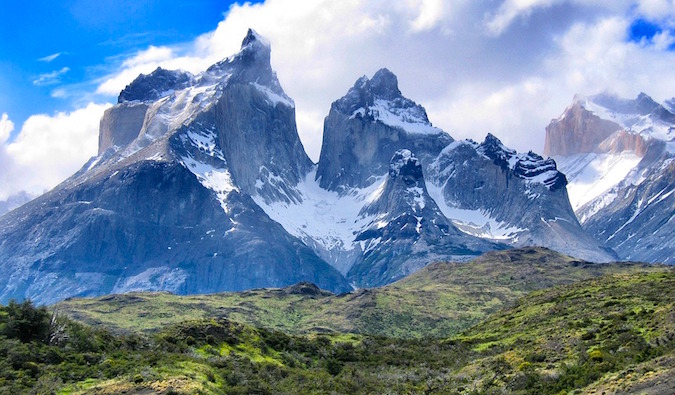
18 of the Best Spots in Patagonia
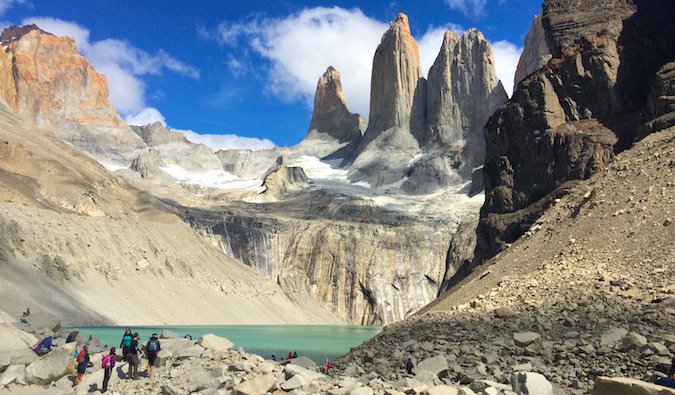
Patagonia: Thoughts on Getting Offline and Trying to Camp
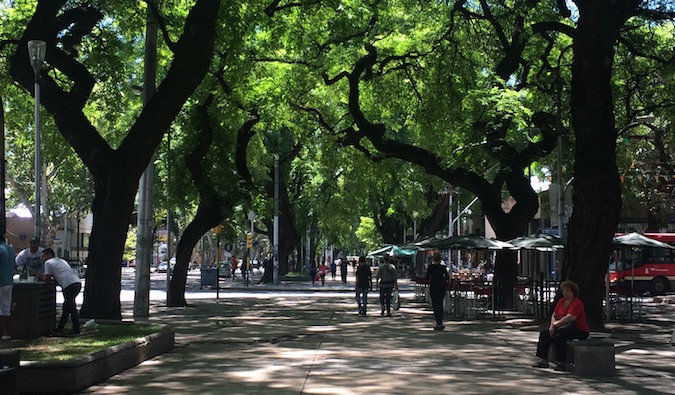
12 Ways to Save Money in Argentina
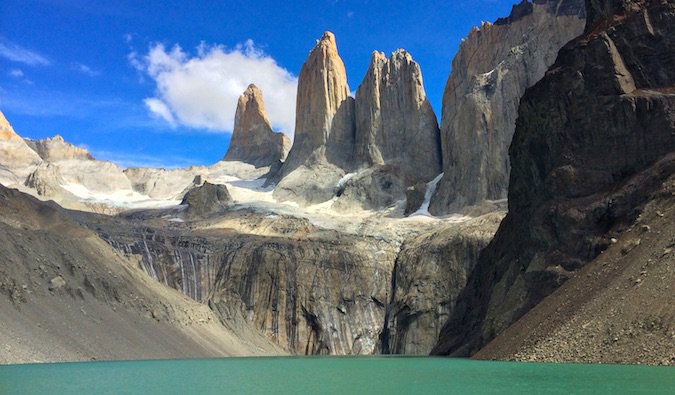
16 Amazing Photos from My Visit to Torres Del Paine
Get my best stuff sent straight to you, pin it on pinterest.
- Where To Stay
- Transportation
- Booking Resources
- Related Blogs
Consulate General and Promotion Center in New York
- Community Affairs
- Cultural promotion
- Investment & Tourism
- Documentation
About the Consulate
Consular services and visas, contact information.
- Foreign Representations

REQUIREMENTS ON ENTRY TO THE ARGENTINE REPUBLIC
Date of update: August 24, 2022
New rules for the current COVID-19 entry requirements
Since August 24 th 2022, it is not required to present anymore neither the affidavit “Declaración Jurada”, a COVID-19 test, nor a COVID-19 health insurance to enter Argentina for Argentine Citizens, Foreign Residents and Non-Resident Foreigners.
It is also not required to do the quarantine.
In the case a COVID-19 positive or potential suspected case is detected or reported while entering Argentina, the case will proceed according to the same prevention and control measures of any acute breath infection
It is not required to show proof of being fully vaccinated against COVID-19 to enter Argentina.
CHECK THE FOLLOWING LINK FOR COUNTRIES THAT DO NOT REQUIRE A VISA TO ENTER ARGENTINA
Search form


The SUBE card is a contactless card that passengers wishing to use the Buenos Aires public transport network in a fast and convenient way can put money on . Learn all about it here.
It can be used to pay for the Metro (Subte) , buses (Colectivos) , and suburban trains.
To use the SUBE card, all you’ll need to do is bring it to the turnstiles on the metro or to the readers on other forms of transport.
Where can you get it?
In Buenos Aires there are lots of " Centros de obtención SUBE " where you can buy the card. The easiest way is to ask for the nearest one at your hotel or at a metro station.
To get the card, you’ll need to show your ID card or passport and fill out a form.
How do you put money on it?
You can top up your card at Subte ticket offices, kiosks, call shops, post offices, shopping centers, and many other places . Every day there are more and more shops popping up that are affiliated with the card.
Price of the SUBE card
The SUBE card has an initial cost of 880 ARS ( US$ 1) .
Is it worth it?
A SUBE card is necessary if you wish to take public transpor t, as you can’t buy tickets on the means of transport themselves. Therefore if you plan on using public transport during your visit, you’ll need to purchase a SUBE card.
More information
You'll find more information about the SUBE card on their official website :
- Sube.gov.ar
You may also be interested in
Tourist bus.
The company Buenos Aires Bus offers a tourist bus service with a route that’s ideal for exploring the city’s most important neighborhoods and monuments. Tour the city in a fun and easy way with the Buenos Aires sightseeing bus.

Where to eat
When it comes to food in Buenos Aires, you'll find rich, hearty and tasty dishes. Argentinian cuisine differs from the rest of South America by maintaining its creole and indigenous character while showing a great influence of European gastronomy, especially Italian and Spanish cuisine.

We're the sisters who founded Across South America 15 years ago... and we're here to help you fall in love with South America just like we are!
There are a few things you must know before heading to Argentina. The better prepared you are, the more you’ll get out of the experience! I highly recommend going over this now, as some of it may surprise you. Find in this post 10 pre-departure Argentina travel tips I want to give you so you can get the are the details for your trip in order.
1- Argentina Travel Tips: Passport and Visa
Make sure your passport has at least six months’ validity from the date of your return flight home. Depending on your citizenship, you may not need a visa if your stay as a tourist is 90 days or shorter. Make sure to check the requirements here , check with your local Argentine Consulate or Embassy. The payment of a reciprocity fee for the Canadian, USA and Australian citizens has been suspended so you don’t need to pay any fee.
2- Argentina Travel Tips: Money

Argentina national Notes come in denominations of two, five, 10, 20, 50, 100, 200, 500 and 1000 pesos.
Argentina’s national currency is the Argentine peso . Although the US dollar and the Euro are generally accepted in stores and shops, foreign currencies can be exchanged at banks and authorized agencies. The most widely accepted credit cards are American Express, VISA, Diners, and MasterCard. Traveler’s checks can be easily traded in Buenos Aires, but not in some provincial towns. Local currency can also be withdrawn 24 hours a day from ATMs, and larger shops and restaurants usually accept payment by credit or debit card
We usually recommend arriving with at least a small amount of cash, and always having cash on hand when visiting rural areas.
How much cash do you need? There’s really no correct answer—you know your spending habits and tastes better than anyone. But be prepared to be tempted by all the fabulous shopping and dining opportunities! A lunch/dinner in a good restaurant with a good wine can be around USD 25-USD 50 in Buenos Aires and Patagonia. Expect the north of the country to be much cheaper than Buenos Aires.
3- Argentina Travel Tips: Vat refunds on accommodation
International visitors receive a direct and automatic reimbursement of the 21% value-added tax (VAT) charged on accommodation in Argentina . VAT on hotel stays and other accommodation will automatically be refunded for international visitors who pay with a foreign credit card or via bank transfer from a foreign bank. The elimination of VAT on accommodation charges, combined with a favorable exchange rate, make visiting Argentina more affordable.
4- Argentina Travel Tips: Tax-free shopping
foreign tourists are eligible to reclaim tax (VAT) on purchases of domestically-manufactured goods with a value over ARS $70 when made at participating outlets. The Global Blue website has useful information on the tax reclaim process here . AFIP, the Argentine tax authority, also has information in Spanish here .
5- Argentina Travel Tips: Traveling Around Argentina
Due to the large size of the country, flying is the most convenient way of traveling long distances all over the country. Flying can be combined with land transportation. There are a number of airlines offering domestic flights, including Aerolíneas Argentinas, Austral, Andes Líneas Aéreas, LADE and LATAM Argentina. Domestic flights and flights to Uruguay depart from Jorge Newbery Airport, located to the north of the City of Buenos Aires As far as traveling by land goes, dozens of buses leave daily from Retiro Bus Station, located in downtown Buenos Aires, to most of the country’s main cities. Long-distance buses are equipped with onboard toilets, air conditioning, and a bar.
6- Argentina Travel Tips: Prepaid telephone cards and sim cards
Prepaid telephone cards are available from many tobacconists and newsagents (‘ kioscos ’), or call-shops/cyber cafes (‘ locutorios ’). Locutorios can be found all over the city, and offer telephone booths and internet access. Local sim cards/chips for your mobile phone can be bought from mobile phone stores and from many kiosks. The leading telephone networks in Buenos Aires are Personal, Movistar and Claro.
7 -Argentina Travel Tips: Internet
Hotels, cafes and restaurants have free wifi in Argentina. In Buenos Aires you can download an app and have access to free wi-fi un many points of the city.

Buenos Aires has over 250 free wifi hotspots in the city, including on the subway and Metrobus transport networks. The BA WiFi app allows users to locate hotspots from their smartphones. You can download the BA WiFi application here . Many bars, cafes and restaurants have free wifi for clients. In the rest of the country, internet is often available in hotels, but not always available during your excursions.
8 – Argentina Travel Tips: Opening hours
The time zone in Argentina is UTC/GMT-3 and there are no time changes during the year. Activity in Argentina starts early in the morning and continues until very late at night.
Shops: Most shops open 9am – 8pm Monday to Friday and at least 9am – 1pm on Saturdays, but many stores on the main avenues and in the main commercial areas also open all Saturday afternoon. Shopping malls usually open until 10pm, including on Sundays and public holidays.
Banks open 10am – 3pm, Monday – Friday. Some branches in the central downtown area may open until 4pm. Cash withdrawals can be made from ATMs/cash machines 24 hours a day.
Times: Locals fit their meals around work and other commitments and times may vary, but in general breakfast is between 7am and 10pm, lunch between 12.30pm and 3pm and dinner between 8pm and 11pm. T
9 – Argentina Travel Tips: Electricity
Electric current in Argentina is AC 220-380 volts. Electric plug configurations used have 2 or 3 flat pins with the top two pins diagonally angled.

10 – Argentina Travel Tips: Health and security
Argentina is a safe, modern country with high police presence and good quality health provision. No vaccinations are required for entry into Argentina . Tap water is drinkable. Although Public hospitals are open 24 hours a day and attend patients free of charge, we always recommend getting a travel medical insurance for your trip.
In Buenos Aires, like in many large metropolis, visitors should always take precautions, particularly in tourist hot spots and crowded places.
If you are starting to plan your trip to Argentina, we can help you design your itinerary. Check some of our suggested itineraries to visit Argentina
Share this:
10 essential argentina travel tips before you go.
April 18, 2024
5 Top Luxury Patagonia Hotels in a One-of-a-Kind Location

Clara Barciela
March 14, 2024
Best Mendoza Luxury Hotels to Stay in 2024

Maria Barciela
March 7, 2024
Mendoza Wineries – Our Ultimate 2024 Luxury Travel Guide

January 31, 2024
Best Things to Do in Rio de Janeiro, Brazil: Go Off the Beaten Path
Clara & Maria Barciela
January 5, 2024
Summer in Peru: A Guide to Sun-Soaked Luxury Adventures
December 12, 2023
Best Places to See Wildlife in South America: Our Expert Guide
We want you to truly experience the place we call home... and love it as much as we do. We're sharing six of our favourite South American destinations with you so you can start envisioning the experience of your dreams.
EXCLUSIVE DESTINATIONS IN SOUTH AMERICA
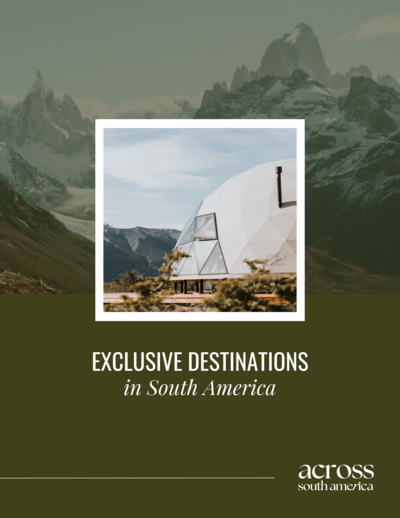
Luxury Travel Planning Guide
GET THE GUIDE →
Elevate your travel experience — download the ultimate luxury guide for an incredible journey!
Diverge from the typical tourist destinations in favor of unique luxury experiences curated by South American locals. We create trips that are custom tailored to your needs & dreams!
© 2024, Across South America. Privacy. Terms and conditions. Site crafted with love by Knap Creative .
Update April 12, 2024
Information for u.s. citizens in the middle east.
- Travel Advisories |
- Contact Us |
- MyTravelGov |
Find U.S. Embassies & Consulates
Travel.state.gov, congressional liaison, special issuance agency, u.s. passports, international travel, intercountry adoption, international parental child abduction, records and authentications, popular links, travel advisories, mytravelgov, stay connected, legal resources, legal information, info for u.s. law enforcement, replace or certify documents.
Share this page:
Argentina Travel Advisory
Travel advisory august 18, 2023, argentina - level 1: exercise normal precautions.
Reissued with updates to crime information.
Exercise normal precautions in Argentina. Some areas have increased risk. Read the entire Travel Advisory.
Exercise increased caution in:
- City of Rosario (Santa Fe province) due to crime .
Read the country information page for additional information on travel to Argentina.
If you decide to travel to Argentina:
- Enroll in the Smart Traveler Enrollment Program (STEP) to receive Alerts and make it easier to locate you in an emergency.
- Follow the Department of State on Facebook and Twitter .
- Review the Country Security Report for Argentina.
- Prepare a contingency plan for emergency situations. Review the Traveler’s Checklist .
- Visit the CDC page for the latest Travel Health Information related to your travel.
City of Rosario – Level 2: Exercise Increased Caution
Criminal and narcotics trafficking elements are active in Rosario (Santa Fe province) resulting in increased crime and violence.
U.S. Embassy personnel are required to give advance notice before traveling to Rosario.
Travel Advisory Levels
Assistance for u.s. citizens, argentina map, search for travel advisories, external link.
You are about to leave travel.state.gov for an external website that is not maintained by the U.S. Department of State.
Links to external websites are provided as a convenience and should not be construed as an endorsement by the U.S. Department of State of the views or products contained therein. If you wish to remain on travel.state.gov, click the "cancel" message.
You are about to visit:
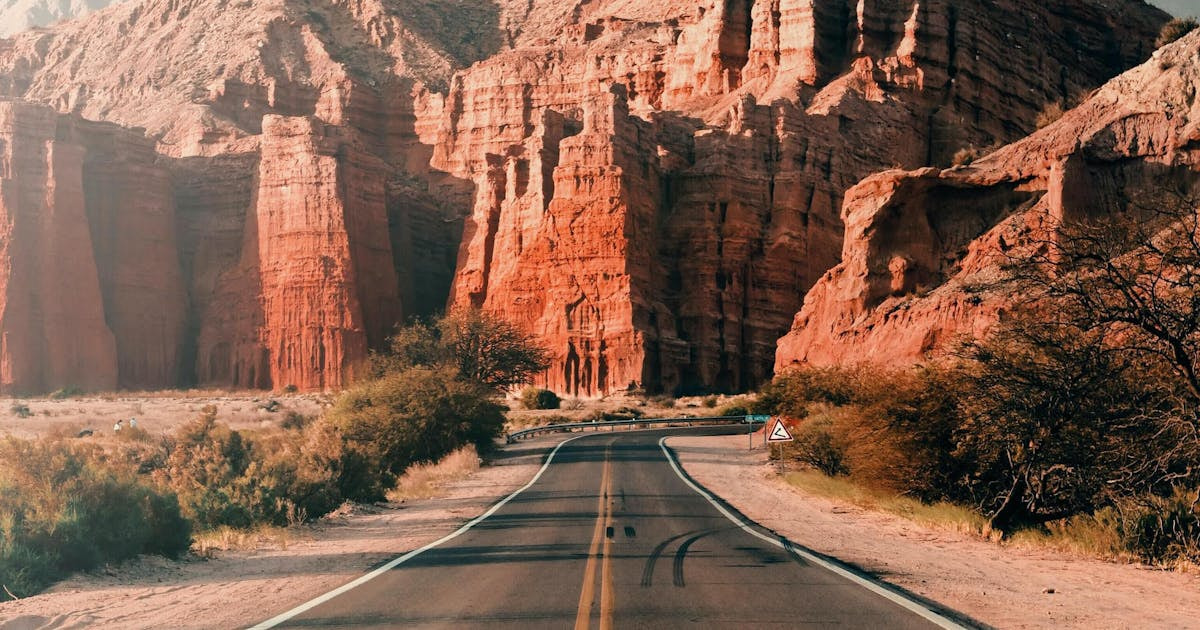
Argentina visa for US citizens: Visa requirements and application process
Last Updated : 24 Apr 2024
Last Updated : 24 Apr 2024 at
30-Second Summary
U.S. citizens travelling to Argentina do not need an Argentina AVE for 90 days to visit the country for tourism purposes.
Green card holders may be eligible for the AVE (Electronic Travel Authorization) based on their country of origin.
The AVE process is done entirely online, without the need to hand in your passport or attend an embassy interview.
Important Information
— Visa type
— Argentina AVE cost
— Argentina AVE processing time
— Argentina AVE validity
— Length of stay
Do US citizens need a visa in Argentina?
Travelers holding U.S. passports are allowed to enter Argentina without needing a visa and can stay for up to 90 days . If someone with a U.S. passport wishes to extend their stay beyond this 90-day limit, they must apply for a visa to remain in the country legally.
Do US Green Card Holders need a visa for Argentina?
The necessity for a visa to enter Argentina for U.S. Green Card holders is determined by the nationality of their passport . US green card holders must get a visa if their country of nationality is subject to Argentina's visa requirements. You can apply for an AVE on Atlys or via the official government portal.
Countries required AVE:
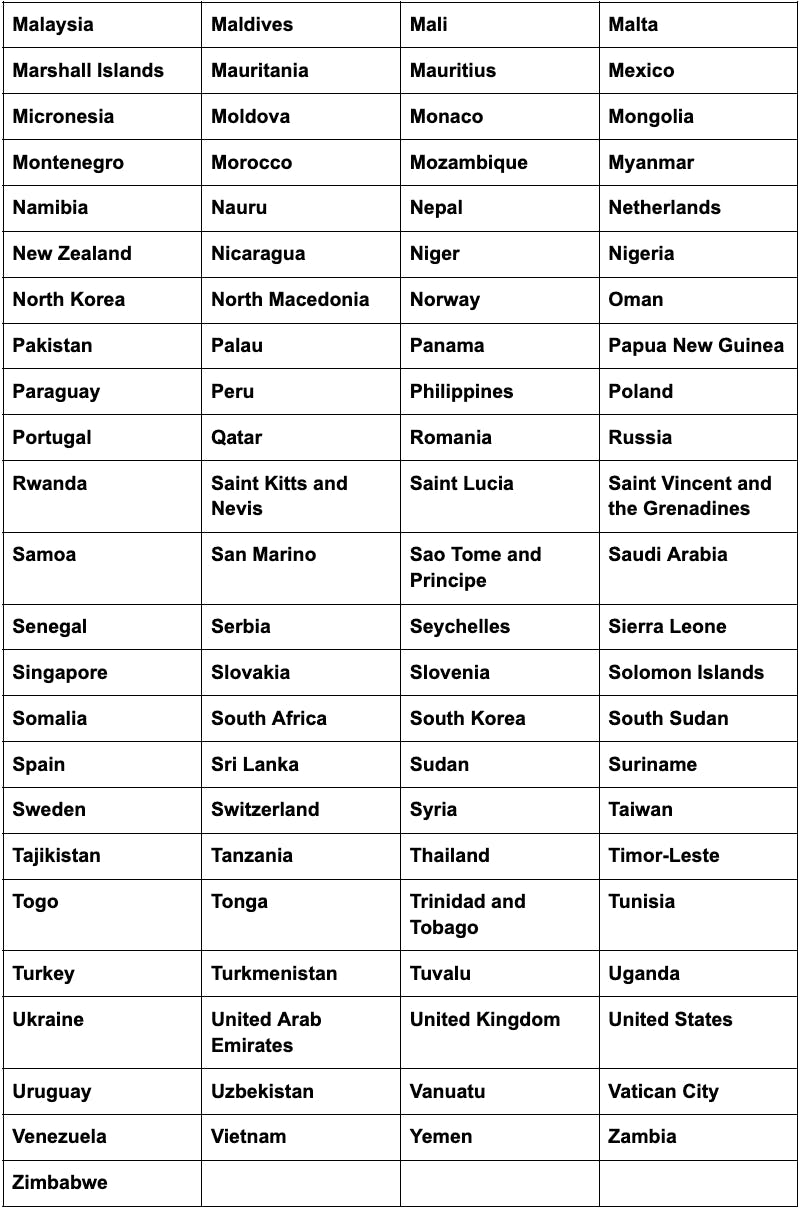
Can Green card holders get an Argentina visa on arrival?
No, green card holders cannot receive a Visa On Arrival (VOA) if they travel to Argentina from the US. Instead, they must secure an AVE (Argentina Electronic Travel Authorization) before their journey. The application for an AVE is a simple online procedure accessible through platforms like Atlys or the official government website.
Argentina AVE requirements for Green Card holders
When submitting an online application for the Argentina travel requirements for Green Card holders, you must provide specific documents:
Valid Passport: You must upload a scanned image of the information page of your current passport. This page should include your photo and personal information. Ensure that your passport is valid for at least six months from your planned arrival date and contains at least two blank pages.
Visa Photo: A digital photo in the size of a passport is required. The dimensions should be 4 cm by 6 cm, taken against a white background. The photo should be recent, with the applicant facing forward and without wearing glasses.
Atlys offers a convenient option for uploading these documents directly through the camera on your smartphone or laptop.
Argentina AVE fees for Green Card holders
The Argentina visa fee is $200 , allowing multiple entries and exits for citizens who are traveling to Argentina from the US.
Argentina visa application process for Green Card holders
To ensure our readers are fully informed on the application process for an Argentina tourist visa as Green Card holders, you can apply via Atlys for convenience or manage the application on your own.
How to apply through Atlys
Here's a simplified guide for applying for your Argentina AVE online through Atlys:
Initiate your application: Start by going to Atlys to begin your application for the Argentina AVE.
Photo submission: Upload a photo you already have or snap a new one using the portal with your phone or computer.
Enter your information: Accurately complete all necessary personal and travel details.
Complete and pay: Check over your application, finalize everything, and then pay any required visa fees.
Why choose Atlys
The processing time for an Argentina visa can be unpredictable, sometimes extending to 20 working days. However, Atlys offers a guarantee to secure your visa within 12 days.
Atlys maintains connections and employs public relations officers at the Argentina Immigration Department to ensure timely visa issuance.
Atlys also provides the convenience of simultaneously applying for visas for your entire family, streamlining the process.
How to apply through the government website
Indian citizens can apply for an Argentina AVE for Green card holders through the Argentina Immigration Portal; here's how:
Visit the Official Government Website: Start by navigating to the official Argentina migration or embassy website dedicated to visa applications.
Find the AVE Section: Look for the section on the website that pertains to Electronic Travel Authorization (AVE) and select the option to apply for an AVE.
Prepare Necessary Documents: Before starting your application, ensure you have all required documents ready, such as your passport and any other specified documentation.
Payment of Fee: Go to the payment website for the AVE fee. Remember, having a payment receipt does not guarantee entry into Argentina.
Complete the AVE Application: Complete your application by logging into the AVE portal after payment. You will need your passport number and the Transaction ID from your payment receipt to log in.
Wait for Approval: Once your application is submitted, wait for an email notification regarding the approval or rejection of your AVE application.
Print the Approval Receipt: If approved, print the receipt. You'll need this document to enter Argentina.
Additional documents to be submitted:
When submitting your application for the Argentina visa for US citizens via the government website, include the following documents:
Valid Ordinary Passport: All applicants must possess a valid ordinary passport. This means your passport must be current and not expired.
Specific U.S. Visas: Applicants should hold at least one of the following U.S. visas: undefinedundefinedundefinedundefinedundefinedundefinedundefined
Visa Exemption with U.S. Entry: If you are from a country that does not require a visa to enter the U.S., you must meet one of the following criteria: undefinedundefined
Valid Diplomatic, Official, or Service Passport: Besides ordinary passport holders, those with diplomatic, official, or service passports who are visa-exempt for the U.S. can also apply, provided they meet the entry requirement or hold a valid ESTA.
Tips to apply
Ensure you have all the necessary documents for your AVE application, such as your passport and photo.
Fill in the application form thoroughly, ensuring all information aligns with your travel documents.
Apply for your AVE well before your trip to give yourself enough time to fix any problems and secure your visa promptly.
Keep an eye on your AVE application's progress to promptly respond to requests for additional information or corrections.
Receive your approved Argentina visa for Green card holders
After submitting your visa application, you must wait for processing. Remember to apply for your AVE early to ensure enough time for processing.
Through Atlys:
Once your visa is approved, you'll receive a notification from Atlys indicating it is approved, and you can download the AVE and print it to carry with you.
Through the government portal:
The government will not send you any email; you must manually check to verify your visa has been granted. Once approved, you can download the visa and print it.
Argentina visa information for Green card holders
How to check argentina ave status.
After applying, you can check your AVE result by following these steps on the Government website:
Visit the Official Website: Go to the official website of the National Directorate of Migrations of Argentina .
Access Your Application: Look for a section related to AVE or visa applications. There should be an option to "Check Status" or similar. You will need to enter application-specific information, such as your application ID, passport number, or other identification details provided during the application process.
Login Required: If required, log in using the credentials you created at the time of application submission. This might include an email address and a password.
View Status: Once logged in or after entering your application details, you should be able to view the current status of your AVE application. This will inform you if your application is still under review, approved, or rejected.
Apply with Atlys and easily check your visa status through the Atlys app .
Argentina AVE processing time
The Argentina AVE processing through the government website can take up to 20 business days. However, using Atlys , you can receive your approved AVE within 12 days . However, this period can be extended if additional review or documentation is deemed necessary by the National Directorate of Migration.
Argentina AVE validity & length of stay
The Argentina visa validity will be mentioned on your AVE once you receive it. With an AVE, you can stay in the country for 3 months , allowing multiple entries and exits.
Our commitment to visa accuracy
This blog's information comes solely from official government websites, ensuring its reliability and accuracy. Trust the provided content, but be aware that updates may occur without prior notification.
Ministry of Foreign Affairs, International Trade and Worship Argentina
Autorizacion De Viaje Electronica
It's important to note that government fees and procedures may evolve. Please consult the official website before starting your application for the most up-to-date information. This approach will help you access the latest details, facilitating a more streamlined visa application process.
Frequently Asked Questions:
Yes, you can apply for a visa for Argentina at an Argentine embassy or consulate. This traditional application process typically involves submitting a visa application form, your passport, and other required documents, which may include proof of travel arrangements, financial means, and a letter explaining the purpose of your visit.
Visas in Under a Week
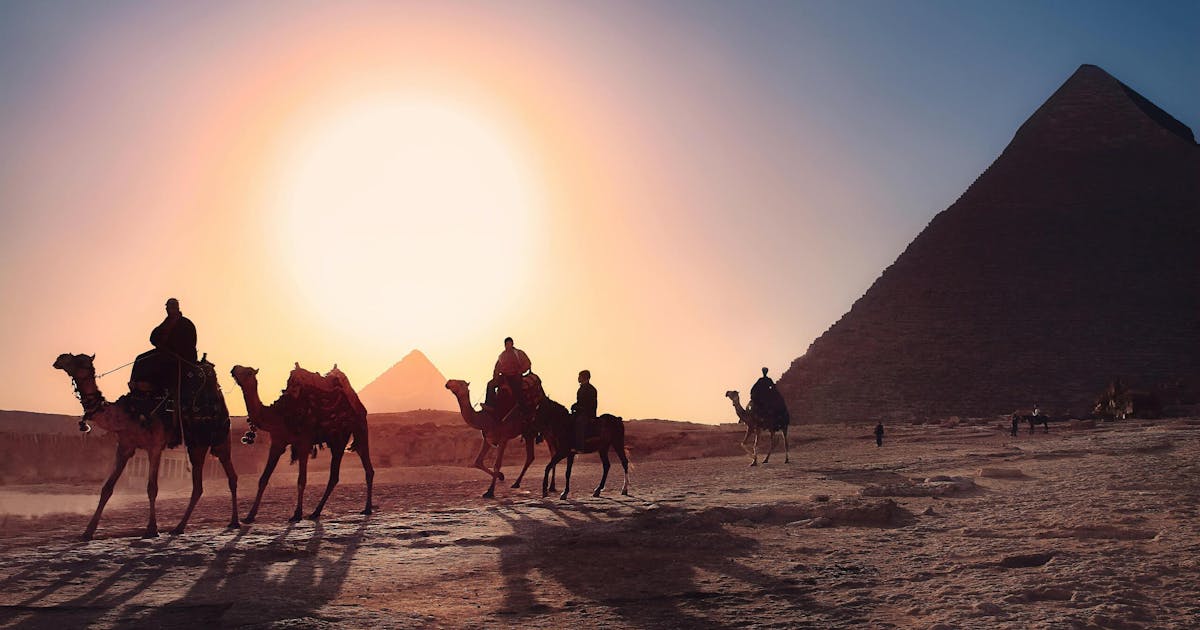
The complete guide for the Egypt visa from the US
Egypt visa for US citizens
In this blog, we'll cover everything US citizens must know about applying for an Egypt E Visa. We'll discuss the visa requirements, application process, processing times, and Egypt visa costs.
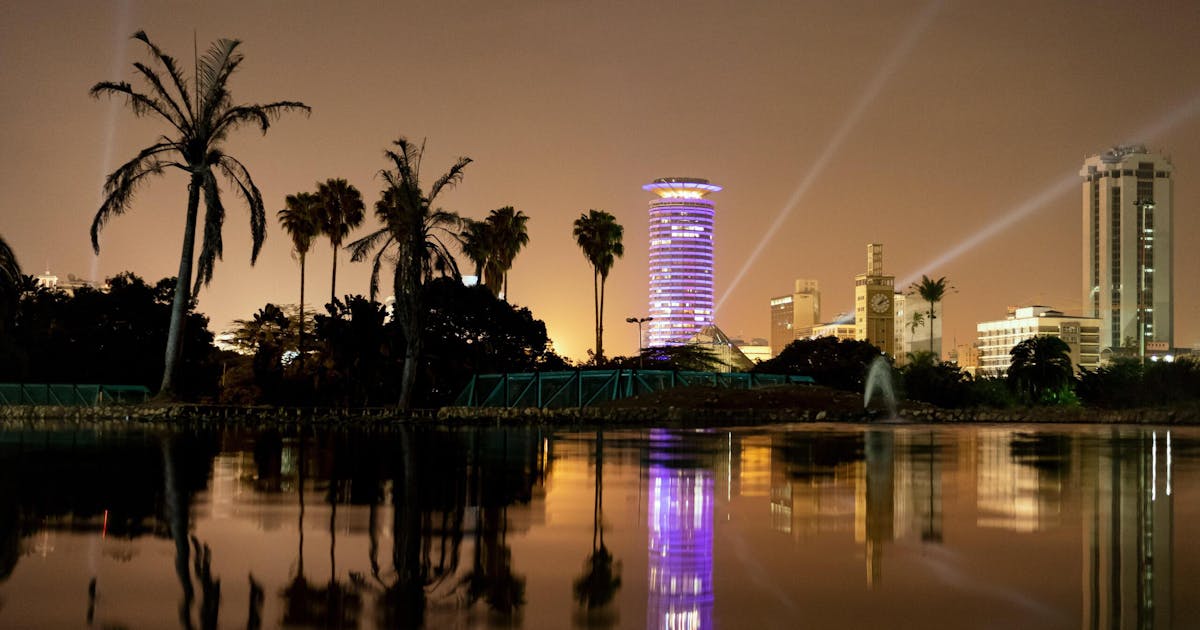
Kenya E-Visa Payment Issues And Solutions
Kenya E Visa Payment Issues
Tips for what to do when you experience issues with your Kenya e-Visa payment process.

Get a Russian Visa for US Citizens Now - A Guide on How to Apply
Russian tourist visa
Optimise your travel experience! Get your Russian visa for US citizens easily with this helpful guide. The post includes the application process and requirements.

Apply for a Bahrain Visa from the US - Bahrain E-Visa Application Process
Bahrain visa for US citizens
Need a Bahrain visa? You're in luck! This post covers everything you need to know about the Bahrain e-visa including the application process and requirements.

Morocco e-visa: Requirements and Application 2024
Morocco e-visa
US citizens can travel visa-free to Morroco. Discover the Morocco e-visa for US Green card holders. How to apply, eligibility, requirements, and the e-visa fee.

Myanmar e-visa— Application and requirements 2024
Myanmar visa for US citizens
US citizens must apply for a Myanmar Visa. You can apply for an e-visa that allows a stay of up to 28 days. Click to learn the most important visa requirements!
Instant Visas
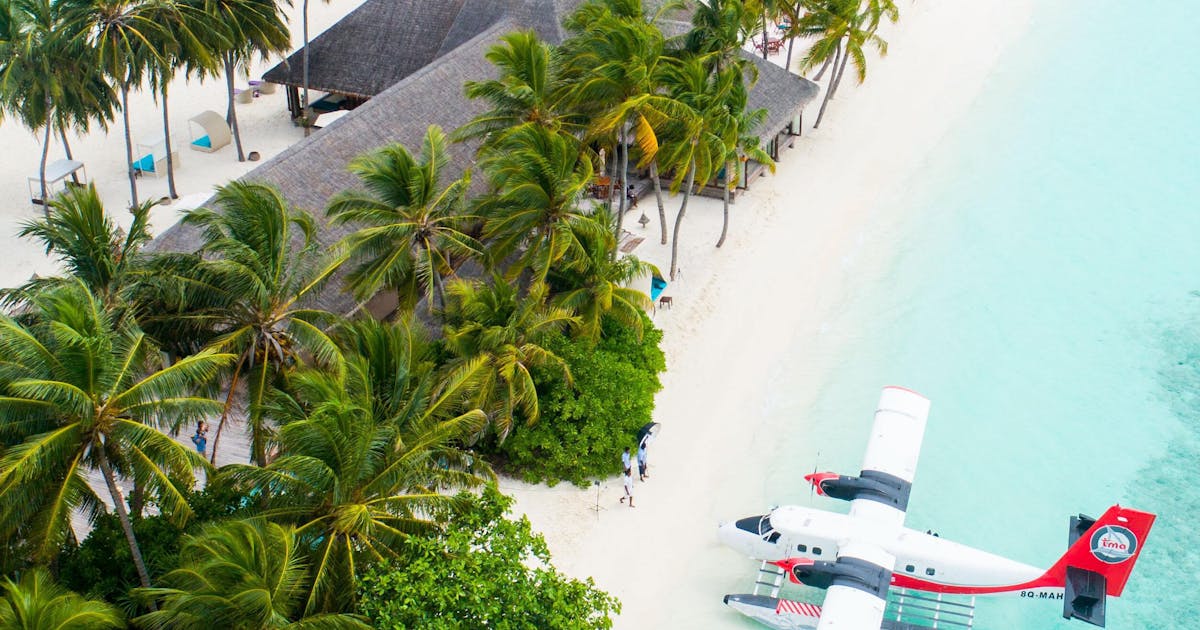
Maldives Tourist Visa: Entry and Visa Requirements to Maldives
Maldives Tourist Visa
In this post you'll learn everything you need to about the Maldives Tourist visa. Including the requirements, costs and other types of Maldives Visas you can apply for.

St Lucia Visa | US Citizens and US Green Card Holders
Travel To St Lucia
Discover the process of obtaining a St Lucia visa for US Green Card Holders. Learn entry requirements, application steps, fees, and visa validity.

Malawi visa for US Citizens
Malwai visa for US citizens
US citizens enjoy visa-free entry to Malawi. Learn about fees, visa-extension, US green-card holder requirement and more
Visa Guaranteed on
- Argentina Tourism
- Argentina Hotels
- Argentina Bed and Breakfast
- Argentina Vacation Rentals
- Flights to Argentina
- Argentina Restaurants
- Things to Do in Argentina
- Argentina Travel Forum
- Argentina Photos
- All Argentina Hotels
- Argentina Hotel Deals
- Last Minute Hotels in Argentina
- Things to Do
- Restaurants
- Vacation Rentals
- Travel Stories
- Rental Cars
- Add a Place
- Travel Forum
- Travelers' Choice
- Help Center
What does the devaluation of peso really mean for tourists? - Argentina Forum
- South America
- Argentina
What does the devaluation of peso really mean for tourists?
- United States Forums
- Europe Forums
- Canada Forums
- Asia Forums
- Central America Forums
- Africa Forums
- Caribbean Forums
- Mexico Forums
- South Pacific Forums
- South America Forums
- Middle East Forums
- Honeymoons and Romance
- Business Travel
- Train Travel
- Traveling With Disabilities
- Tripadvisor Support
- Solo Travel
- Bargain Travel
- Timeshares / Vacation Rentals
- South America forums
- Argentina forum

Suddenly I hear about the devaluation of the peso by 50 percent and not really understanding maths or economics I am a bit confused as to how this affects things materially.
We are coming from the UK for a month, accommodation booked with Air BnBs, internal flights all booked with AA.
I had planned on:
a)Bringing some crisp new dollars from an exchange here in London to change into pesos at a cambio
b)Transferring money to Western Union from my UK bank and apparently getting a great rate when I pick up pesos after a long wait in a queue
c) Using fee free Monzo/Metro debit cards (both MasterCard) now and then and getting money back a few days after using the card but not sure how much or if it really was going to happen
I realise everything is in a state of flux and people are still adapting to the change but I'd be really grateful if anyone could explain if I need to modify my approach in the light of the devaluation or just carry on with the initial plan.
38 replies to this topic

I think your initial plan is still solid.
I guess the key thing for tourists will be will the blue and MEP rate shoot up, or will it now be a lot closer to the official rate.
Atm blue is about 20% better than the official rate, compared to over double pre devaluation.

What do you mean by "atm blue"?
Atm's have always used the official exchange rate. So, ONE good thing about the new exchange rates, is that it should be possible to withdraw some Pesos from ATM's. Not the best possible deal, but at least much better than the previous 370 Pesos for 1 USD. The low limits per withdrawal and the excessively high fees will persist, I'm afraid.
I think he's using "ATM" as an acronym for "at the moment", not referring to a cash machine.
Thank you, Bmilsy!
(I did not know that one, sorry 😀)

@ #6 several websites you can check such as bluedollar.net Also apps like DolarBlueHoy.
We have extensively explained the situation on more than one current thread.
You can click on our screen names (in green) and you will be directed to every post written on every thread.

Also Alewal and Jorge C both live here and are frequent contributors. I don't know if they have commented on the financial situation, though.
basically, everything has doubled in price. It is no longer a bargain destination it is more in line or even more expensive then traveling to the US.
- Planning for 10 day self drive around Salta 10:32 pm
- I Need a Dental Cleaning in Buenos Aires 8:30 pm
- BA to Asuncion - suggested stopover location 2:58 pm
- Currency and dollars in Buenos Aires 11:30 am
- Buenos Aires March 2025 today
- Travelling from Ushuaia to Punta Arenas on a Sunday today
- Has anyone flown on Avianca to buenos aires yesterday
- La bombonera tour visit yesterday
- Which is better AEP or EZE yesterday
- Professional Photographer yesterday
- Transfer from airport yesterday
- What area to stay to see sights in BA yesterday
- Dengue in Buenos Aires yesterday
- Purchasing flights on aeronileas - do I get MEP rate yesterday
- Travel from Iguazu Falls to Mendoza 3 replies
- Beach resort other than Mar del Plata? 7 replies
- Reciprocity Tax (Entrance Fee) at Buenos Aires EZE airport 15 replies
- The 21% VAT tax refund for a Hotel stay in Argentina 2 replies
- April in Buenos Aires-What might the weather be like? 4 replies
- Aerolinas Argentinas Visite Argentina air pass 20 replies
- Argentina Reciprocity fee 88 replies
- puerto natales to el calafate/Chalten bus schedule 4 replies
- Buenos Aires to Ushuaia by train 4 replies
- Best/safest bus company's 13 replies
- Driving in Argentina for Overseas Visitors
- What is the best way to travel around Argentina
- Bus travel in Argentina

Buying a Sim Card for Argentina in 2024

Planning a trip to Argentina and looking for the best way to get connected? Get yourself an e-sim card or a local prepaid sim card on arrival to avoid high roaming charges. This is the ultimate guide with everything you need to know on how to stay connected when traveling to Argentina.
Find out where to buy a prepaid sim card, the registration process, the best e-sim cards for Argentina, up to date prices as per January 2024, the best 4G/5G network in Argentina, my recommendation, a vlog with my experiences and even information about international sim cards for Argentina.
When getting to a new country the first thing I do is looking for the best way to get connected and as a full time nomadic travel blogger who is on a journey to travel to every country in the world I change countries constantly. Therefore on Traveltomtom you can already find more than 200 sim card guides from all over the world: Buenos Aires , Brazil , Colombia , Paraguay , Chile , Peru , USA , New York , Paris , London , Amsterdam , Madrid , Spain , Europe , Dubai and many more.
Are you flying to Buenos Aires then also check out my guide for buying a sim card at Buenos Aires Airport in 2024 .
Next time when planning your adventure abroad come check out Traveltomtom for the latest e-sim card and prepaid sim card advice for your holiday destination. Bookmark me!
Why buying a sim card for Argentina
First off don’t let high roaming costs ruin your trip to Argentina. A roaming plan for $5 USD per day doesn’t sound too expensive but for $5 USD you can get 10 GB data for a whole month with an Argentina prepaid sim card. Also keep in mind that overseas data plans limit the max internet speed! Data speed on overseas roaming plans is very disappointing.
You think you can rely on WiFi? True, almost everywhere you can find public WiFi these days: restaurants, bars, hotels, etc. However, this is no guarantee! And what about ordering a taxi on the streets? Searching for things while on the road like nearby restaurants, bars, ATMs, emergencies, etc. Investing a couple dollars will make traveling to Argentina so much more convenient.
Also keep in mind that connecting to public WiFi is on an UNSECURED network. In these cases the use of a VPN is recommended.
Very important is too make sure that your phone is unlocked. Prepaid sim cards from another country or international or e-sim cards only work in unlocked phones. If you are not sure if your phone is unlocked ask your mobile internet provider from home.
My recommendation
Traveltomtom recommends a Claro sim card for Argentina. They sell prepaid sim cards for tourists in the Claro stores in Argentina and have a great 4G/5G network in Argentina.
You can only buy a Claro sim card on arrival in Argentina and only physical prepaid sim cards are available, no e-sims for tourists.
Traveltomtom definitely recommends e-sim cards for Argentina. The cheapest Argentina e-sim card starts from $10 USD. You can order e-sim cards for Argentina via SimOptions , Airalo or Nomad . See below for more info.
you may also like...

We also recommend international sim cards for traveling in Argentina. These global sim cards with data get extra interesting when traveling to multiple countries as their data is valid all over the world. Check out my comparison of the best travel sim cards with data in 2024 and pick the one that suits your trip to South America.
Best e-sim cards for Argentina
E-sim cards are the easiest way to stay connected when traveling to Argentina in 2024. You arrange everything online within just a couple minutes. No more swapping physical sim cards or visiting a sim card shop.
You order an e-sim card for Argentina on the internet, you receive a QR code, scan it, follow the simple steps and within less than 2 minutes you have a Argentina e-sim card installed on your phone.
Upon arrival in Argentina it automatically connects you to an available network and you enjoy data on your phone pretty much when the plane lands.
Make sure your phone is e-sim compatible before ordering an e-sim card for Argentina.

Airalo is a trusted e-sim card provider. Check out the Airalo e-sim card plans for Argentina in 2024:
- 2 GB data for 7 days = $15 USD
- 6 GB data for 30 days = $26 USD
Click here for more info or to directly order an Argentina e-sim card via Airalo .
The above Abrazo e-sim cards for Argentina use the Movistar 4G/LTE network, are data-only and phone calls are not supported.

SimOptions is another e-sim provider and Traveltomtom has used SimOptions in more than 50 countries around the world without any problems. SimOptions sells international e-sim card that are valid in up to 141 countries, including Argentina.
- 3 GB data for 30 days = $24.90 USD
- 5 GB data for 30 days = $34.90 USD
- 6 GB data for 15 days = $39.90 USD
Click here for more info or to order an international e-sim card for Argentina via SimOptions .

Nomad is another e-sim provider and actually has the cheapest e-sim card deals for Argentina in 2024:
- 1 GB data for 7 days = $10 USD
- 3 GB data for 30 days = $20 USD
- 5 GB data for 30 days = $28 USD
- 10 GB data for 30 days = $45 USD
Click here for more info or to directly order an e-sim card for Argentina via Nomad .
There is also still the option of buying an international prepaid sim card for Argentina on the internet. A pre-registered physical international sim card will be delivered to your home address before your trip. You put this sim card in your phone on arrival in Argentina and it connects automatically. Plug and play!
This sim card costs $49.90 USD and gives you 5 GB data for 14 days. You can order this physical sim card for Argentina via SimOptions .
Mobile internet providers in Argentina
There are 3 mobile internet operators in Argentina: Movistar, Claro and Personal Flow. All of them have prepaid sim cards for tourists. However, getting one in Argentina is a little more complicated than in other countries.
All the mobile internet operators in Argentina only provide physical prepaid sim cards for tourists, there are no e-sims available for tourists.
Where to buy a prepaid sim card in Argentina

Buenos Aires Airport - EZE
The most convenient place to buy a prepaid sim card on arrival in Argentina is of course at the international airport of Buenos Aires, called Ezeiza (EZE). There are two stores where you can buy a sim card for tourists. Read more about it in my guide for buying a sim card at Buenos Aires Airport in 2024 .
Official retail stores
All operators have multiple phone stores around Buenos Aires and other cities and tourist destinations in Argentina. At the official retail stores of Personal Flow and Claro they sell prepaid sim cards or actually they give them for free and do the registration for free as well.
Movistar does NOT sell or register prepaid sim cards at their official retail stores.
There are uncountable kiosks all over every city, basically convenience stores. These little shop, often open 24 hours, sell prepaid sim cards for Argentina for less than $1 USD. These kiosks have sim cards from Personal Flow, Claro and Movistar. But Traveltomtom does NOT recommend buying a prepaid sim card here, keep reading.
Traveltomtom encourages to buy sim cards for traveling to Argentina online because of its convenience. Therefore international prepaid sim cards are a very easy way to stay connected when traveling to Argentina. You can order a physical international prepaid sim card for Argentina via SimOptions .
In 2024 most travelers are looking for e-sim cards to stay connected and no wonder. It is a super easy way to stay connected when traveling to Argentina. Traveltomtom recommends ordering an e-sim card for Argentina via either SimOptions , Airalo or Nomad .
Registration process for Argentina prepaid sim cards
Prepaid sim cards need to be registered on your passport, so when buying a sim card in Argentina bring your passport. A copy of your passport will be taking when buying a sim card at an official retail store.
However, in a kiosk you can buy a prepaid sim card without your passport. But don’t get too excited as these sim cards are NOT pre-activated and you will need to do the activation by yourself online on the operators website or go to an official retail store.
I tried to do the registration process myself on the internet last year, but it was too much of a hassle. Eventually I gave up and went to an official store only to found out there was an issue and I ended up waiting more than 1 hour to get everything fix. Precious holiday time that I had definitely wish I had spent differently!
Buying a prepaid sim card in Argentina is a little more complicated than usual. In my opinion the online sim cards for Argentina are pretty expensive and buying a sim card at a kiosk is too much effort. Therefore Traveltomtom recommends buying a sim card at an official retail store.
That automatically means Movistar is NOT a recommended mobile internet provider to buy a prepaid sim card in Argentina. Movistar only sells prepaid sim cards at street kiosks and the registration you will have to figure out yourself.
If this all sounds like too much hassle then simply order an e-sim card for Argentina on the internet via either SimOptions , Airalo or Nomad . You don't need any ID verification for these e-sim cards, just your email address.
Best 4G/5G network in Argentina in 2024
Essential for determining the best prepaid sim card for traveling in Argentina is the mobile internet network coverage in Argentina . Therefore Traveltomtom compared the 4G/5G mobile data network coverage maps of the mobile internet operators in Argentina. Have a quick look below and thank me later, especially if you are traveling to the amazing Patagonia in South Argentina.
Is there 5G in Argentina?
Yes, there is 5G in Argentina, but it is very limit. As of 2024 there is pretty much only 5G available in Buenos Aires and some other big cities. From my own recent experiences traveling to Argentina I can tell you that I was barely connected to 5G while visiting Buenos Aires, mostly just 4G/LTE.
Personal Flow has the best 5G network in Argentina in 2024, but... keep reading.
Personal Flow 4G/5G coverage map

Movistar 4G/5G coverage map

Claro 4G/5G coverage map

From the above coverage maps we can clearly see that the Personal Flow 4G/5G coverage is very weak in the Southern regions of Argentina. Therefore especially for those people traveling to Patagonia a Personal Flow sim card is NOT recommended.
Traveltomtom also concludes that Movistar has the weakest mobile data network coverage in Argentina in 2024.
Based on the above comparison of the mobile internet operators in Argentina Traveltomtom comes to the conclusion that Claro has overal the best 4G/5G network coverage in Argentina in 2024.
Prices prepaid sim cards in Argentina in 2024
The below prices are updated as per January 2024 and displayed in Argentinian Pesos. The Argentina Peso is one of the most volatile currencies in the world and in the last years it devaluate multiple times.
Get your Argentinian Pesos on the Blue Market Currency Exchange. For more info read below about my experienced buying a sim card in Argentina.
As of January 2024 the Blue Market exchange rate for the Argentinian Peso is $1 USD = $970 ARS

Although not recommend for tourists, above are the Movistar prepaid data bundles. As you can see the top up options are also very limited. With a 2.5 GB data bundle being the biggest one. More info on the Movistar Argentina website .
Personal Flow

Above you can see the data packages for Flow prepaid sim cards. There are only small data bundle available for prepaid sim cards. More info on the Personal Flow website .

Luckily Claro has a wide range of internet data packs available for prepaid costumers, see the above. Personally I took the 10 GB data plan for 1,300 ARS. More info on the Claro Argentina website .
Another reason to choose Claro as your prepaid sim card for Argentina.
Best sim card for Argentina in 2024
For Traveltomtom it leaves no doubt that Claro is the best prepaid sim card for traveling to Argentina in 2024. They have the best 4G/5G network coverage in Argentina and the best prepaid sim card deals for tourists and also excellent service in the Claro retail stores.
When traveling to Patagonia in the South of Argentina then definitely don’t get a Personal Flow prepaid sim card. Their 4G/5G network coverage is pretty much non-existing in Patagonia and beyond. Which is sad because in the Central regions of Argentina Personal Flow actually has the strongest 4G/5G network coverage.
Buying a prepaid sim card from Movistar in Argentina is complicated. You will have to buy one first at a kiosk and then go to an official retail store to get it registered. Then back to the kiosk to get credit on your account. For real Movistar Argentina? Who wants to do that? Big no-go!
Also Movistar has the weakest 4G/5G network coverage in Argentina, so all in all buying a sim card from Movistar is NOT recommended for tourists.
Traveltomtom advices ordering an e-sim cards for Argentina online to avoid all the hassle. If you are going to travel extensively around Argentina a local prepaid sim card from Claro is recommended. If you are just visiting Buenos Aires and some of the popular tourist destinations and e-sim card would be the perfect way to get connected on your trip to Argentina.
The best-buy e-sim card for Argentina is from Nomad and for $45 USD you get 10 GB data, which is just $4.5 USD per Gigabyte. SimOptions and Airalo also have interesting e-sim card deals for Argentina in 2024.
Order a prepaid sim card for Argentina online

Is your phone not e-sim compatible then there is still the possibility to order a sim card for traveling to Argentina on the internet. Have a look at the options below.
Arrive prepared in Argentina with an international prepaid sim card. You order them online and a physical prepaid sim card will be delivered to your home address. You put this sim card in your phone and it automatically connects to an available network upon arrival in Argentina, basically when the plane lands you are instantly online.
SimOptions sells the following physical prepaid sim card that is valid in 22 countries including Argentina:
- 5 GB data for 14 days = $49.90 USD
Click here for more info or to order this international sim card for Argentina via SimOptions .
My experience buying a sim card in Argentina
Like I have mentioned a couple times before the process of buying a prepaid sim card in Argentina is rather complicated. Only Claro stores sell a decent prepaid sim card deal with a big data plan. You can also choose to get your sim card registered in a Claro store and then go to a kiosk to add money on your account.
The in-store prepaid sim card deal from Claro costs 2,700 ARS and you get 25 GB data. Since I was only staying for a week and also wanted to know more about the kiosk and the top up options I got a free Claro sim card at an official Claro store. They registered my new Argentina sim card on my passport and I was good to go.
I walked out of the store with a registered prepaid sim card and a new phone number, but there was NO data or credit on it yet. In the Claro store itself they could NOT add credit!

Upon activation I got a text message and the very friendly guy in the Claro store showed me that I only had to click on the link in the sms and I got redirected to the account page logged in with my mobile number on the Claro website. Then I directly saw all the top-up packages available, the above picture is a screenshot of what it looked like on my phone.
Then I went around the corner to the first kiosk that I saw and I topped up my account with 1,300 ARS. I gave the guy in the kiosk my number and the money and within 5 seconds my account was topped up with 1,300 ARS. With that credit I was able to activate a 10 GB data bundle for 30 days. The topping up process went very smooth in the kiosk, activating the data plan took me less than a minute.
Here is a complete vlog about buying a sim card in Argentina with all my tips and experiences.
If all the above sounds like too much hassle remember that you can also still order a sim card for Argentina online. If your phone is e-sim compatible then simply order your Argentina e-sim card via SimOptions , Airalo or Nomad .
Curious what it looks like trying to visit every country in the world ? Go check out my Instagram account @traveltomtom and follow along. As of January 2024 I have visited more than 155 countries, so still a long way to go.
View this post on Instagram A post shared by Adventure Traveler & Blogger (@traveltomtom)
If you have any questions then please leave me a comment below and I will try to help you out. I hope all the above tips for buying a sim card for Argentina were helpful.
Enjoy your trip to Argentina!
Some links in this article about the best sim cards for traveling in Argentina are affiliate links. If you buy any product after clicking on an affiliate link I will earn a small commission. Don’t worry this is at absolutely no extra cost to you!
- buenos aires

- Travel Sims
Best Tourist Sim Cards in Argentina in 2024
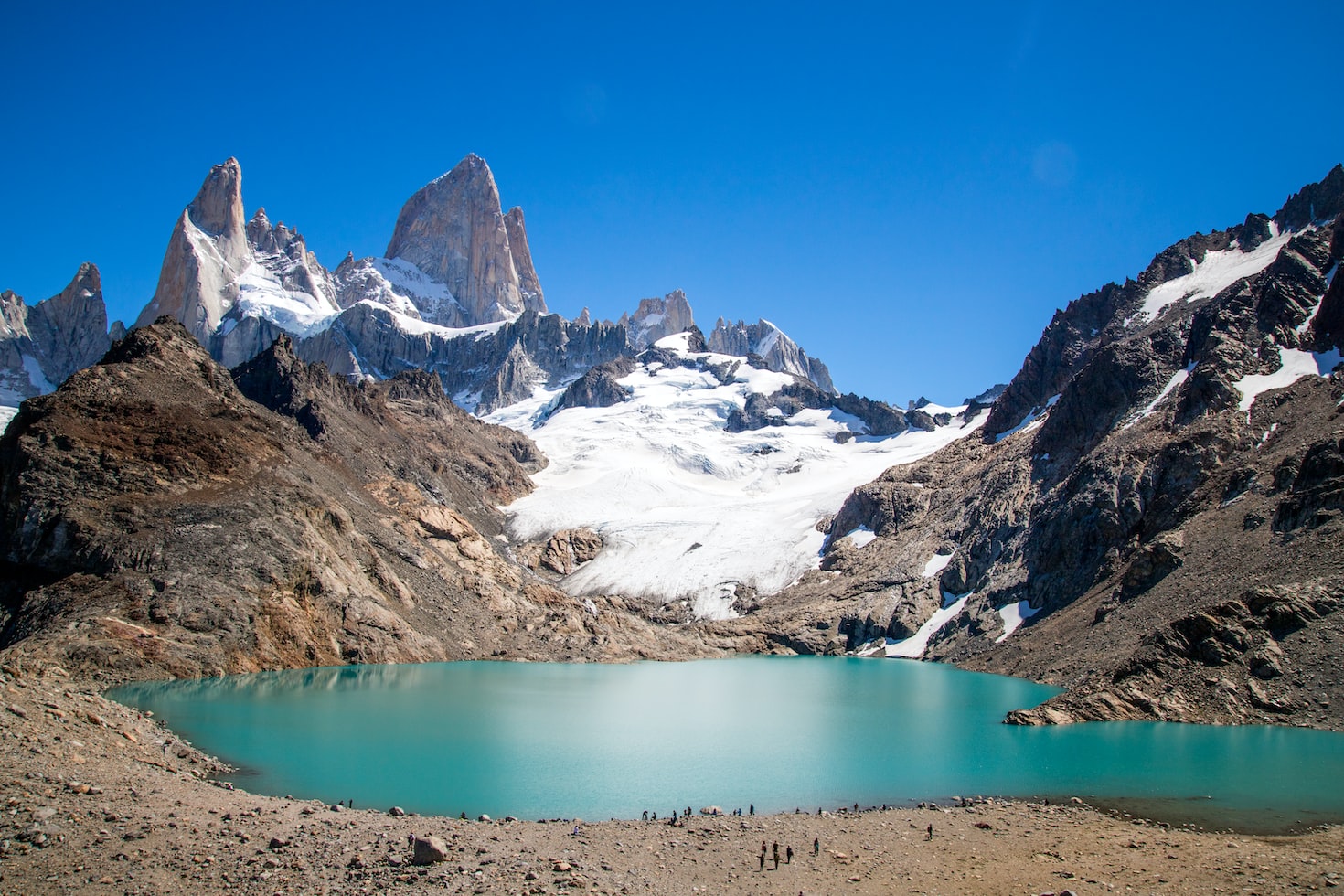
If you plan on visiting Argentina, having a sim card is a necessity. Access to the internet while traveling allows for easy navigation through unfamiliar cities. You’ll be able to locate the best restaurants, find your way to your accommodation, book a taxi, and share photos with your family on the go.
While roaming is an option, international fees can quickly accumulate. Therefore, we always suggest either an eSIM or a local sim card to take advantage of local phone rates. The good news is that obtaining either an eSIM or local sim card in Argentina is extremely simple.
This comprehensive guide aims to provide you with all the information you need to know about purchasing a sim card in Argentina, including current pricing and the most suitable sim card for your needs.
Table of Contents
Best sim card in argentina for tourists.
The best sim card in Argentina is the 10 Gigas Gigante prepaid sim card from Claro. This card offers a huge 10GB of data that is valid for 30 days for just 2,200 ARS.
When you visit a Claro store they will likely try to sell you their tourist sim card, however, this cost 5,000 ARS which is a lot more expensive than their local packs. The only difference is it comes with 25GB of data but for most people 10GB is enough.
Claro has the best mobile network and coverage in Argentina which is why I recommend it over Movistar. If you are on a budget, Claro offers some smaller plans here that cost less and can be tailored to the number of days you are visiting.
If you value convenience over price then you can also check out the Airalo Argentina eSim . Unfortunately, in Argentina buying an eSim is quite a bit more expensive than buying a local sim so I can’t recommend it to budget-conscious travellers, but eSims are always more convenient than physical sim cards.
Argentina Sim Card Prices
A Tourist Sim Card in Argentina costs 2,200 ARS in April 2024, however, the exact price will often depend on the store you visit and the plan you choose.
Alternatively, an eSim in Argentina will cost between $15 USD and $26 USD. This, again, depends on how much data you require and which eSim provider you choose.
I generally recommend this Airalo plan for most tourists visiting Argentina which includes 6GB of data which is valid for 30 days and costs $26.50 USD.
Argentina Sim Card Providers
In Argentina, the main SIM card providers are Claro, Personal, Flow, and Movistar. Claro is one of the leading mobile telecommunications companies in the country, offering a wide range of prepaid and postpaid plans. Personal is another major provider, known for its reliable network coverage and competitive prices. Flow, a subsidiary of Telecom Argentina, offers flexible plans and a variety of services, including high-speed internet, voice calls, and SMS. Movistar is a popular choice among Argentinians, providing a strong network signal and a range of affordable plans. All four providers offer different packages to cater to diverse consumer needs, ensuring customers have a variety of options to choose from.
Claro Tourist Sim
Claro is a leading telecommunications company in Argentina that offers tourist sim cards for travelers visiting the country. Their sim cards provide reliable and fast mobile internet coverage, allowing tourists to stay connected and access various services during their stay. Claro’s tourist sim cards come with generous data packages, affordable rates, and can be easily activated. With Claro’s tourist sim cards, travelers can explore Argentina hassle-free and stay connected at all times.
Claro Argentina Tourist Sim Price
The price of a Claro tourist sim card in Argentina is 2,200 ARS.
The plan offered by Claro stores includes 10GB data + free social media valid for 30 days.
Personal Flow Tourist Sim
Personal Flow is a leading provider of tourist sim cards in Argentina. Offering reliable and affordable connectivity, their sim cards allow tourists to stay connected throughout their visit. With wide coverage and fast internet speeds, users can easily navigate different cities and access various apps and services. Personal Flow’s customer service is commendable, providing assistance and resolving any issues promptly. Stay connected and explore Argentina hassle-free with Personal Flow’s tourist sim cards.
Personal Flow Argentina Tourist Sim Price
The price of a Personal Flow tourist sim card in Argentina is 1,620 ARS.
The plan offered by Personal Flow stores offers 3GB data valid for 30 days.
Movistar Tourist Sim
Movistar is a leading telecommunications company in Argentina, offering reliable connectivity for locals and tourists alike. Their tourist SIM cards are a convenient option for travelers visiting the country. These prepaid cards provide affordable data plans, allowing visitors to stay connected while exploring Argentina’s attractions. With reliable coverage and competitive prices, Movistar’s tourist SIM cards are a popular choice for travelers looking for seamless communication during their stay.
Movistar Argentina Tourist Sim Price
The price of a Movistar tourist sim card in Argentina is 1,700 ARS.
The plan offered by Movistar stores includes 5GB data + 2GB social media valid for 30 days.
How to Get a Sim Card in Argentina
Identify mobile providers: Claro, Personal Flow and Movistar are your best options in Argentina.
Find your nearest store: Locate a store or retailer by searching on Google Maps for your nearest store or asking at your hotel reception. I’ve never had issues finding a store as they can usually be found in major cities, shopping centers, or tourist areas. If possible, I always recommend to to avoid airports and head in to an official store in the city.
Bring the necessary documents: It is always a good idea to carry your passport or identification documents for sim card registration purposes. We’ve found most providers will need to confirm your identity to provide a sim card and it can be a major hassle to head to a store only to have to come back again later with your passport.
Choose your plan: Either request the plan you are after or consult with the staff in the store to select the right plan for you. My recommendations at the beginning of this guide are a good starting point, but the staff will usually be able to suggest the best option.
Pay and activate your card: Pay for the SIM card and plan, and the staff will activate it for you.
Test: It’s always a good idea to check that you can access the internet before you leave the store. I always search for something on Google then refresh my Instagram feed to check it’s working fine.
Where to Get a Sim Card in Argentina
At the airport.
Buying a prepaid sim card for Argentina at the airport is usually considered the most convenient option for travellers arriving by plane.
However, airport stores selling sim cards are almost guaranteed to charge inflated prices, so if you are a cost-conscious traveller then you should definitely buy your sim card from a store in the city center.
In addition to this, we would argue that buying physical sim cards at all aren’t particularly convenient now that most people use esim compatible phones. If you are looking for the most convenient option, then buying an esim before you arrive or with the airport wifi is much easier and will save you having to queue up or communicate with staff.
If you must purchase a sim card at the airport in Argentina then you will be in luck. All major international airports in Argentina have stores selling sim cards. Despite the prices being higher than normal, the staff are knowledgable and will be able to get you set up with the correct sim card relatively quickly.
If you want to avoid the inflated sim card prices you’ll find at the airport and your phone isn’t esim compatible, then you’re going to need to head in to a store to buy your sim card.
I recommend visiting one of the official retail stores of the mobile internet operators such as Claro, Personal Flow and Movistar. Your best option is to enter their names into Google Maps and find the branch closest to your hotel or accommodation. Typically the staff in the official stores in Argentina are knowledgable and helpful which means you can ensure you’ll walk away with a functioning sim card.
Despite this, it’s always a good idea to check your internet is working before you leave the store by loading a Google search results page and your preferred social media app. You should also ensure you always bring your passport with you when purchasing a sim card in case they need to register it.
If you like to be prepared and would prefer to arrive in Argentina with your sim card all sorted and your phone ready to connect to the internet immediately then you should look into purchasing a sim card online.
The first option is to buy your sim card in advance via SimOptions, which is a company that will prepare and ship a sim card directly to your door. It’s a reliable and effective service, but with the invention of eSims it’s becoming obsolete.
The better option is to purchase an eSim online. We’ve written more on that below!
Argentina eSim
An eSim is a digital version of a traditional sim card and is most likely the future of connectivity for mobile devices. The convenience of no longer visiting a store, handing over your passport and purchasing a physical sim card is quickly making physical sim cards obsolete in favour of eSims.
We recommend Airalo’s eSim when travelling to Argentina. The Airalo Argentina eSim offers fast internet speeds, wide coverage and extremely competitive prices making it a far more compelling option than purchasing a physical sim card from any of the local sim card providers.
In order to get set up with an Airalo eSim , all you need to do is visit Airalo here and purchase the eSim online (the $26.50 USD plan is suitable for most travellers). Once you’ve purchased the sim card Airalo will email you instructions and a QR code. Following these instructions should take just a couple of minutes, then you’ll have a sim card in Argentina without having to venture outside.
Airalo Argentina
Our preferred eSim provider in Argentina is Airalo . We used them, alongside a local sim card on another device, for our most recent trip to Argentina and found the service to be equal to the local sim card but without the hassle of acquiring a sim card in a store.
Airalo’s Argentina eSim uses the Movistar network to provide data and connect users to the internet. You can expect very good coverage and reliability with the Movistar networknetwork as they are amongst the best mobile internet operators in Argentina.
Here are the plans and prices for Airalo’s Argentina eSim:
2GB data valid for 7 days – Price: $15 USD 6GB data valid for 30 days – Price: $26.50 USD
For most travellers we recommend the 6GB data plan for $26.50 USD which is valid for 30 days. Some travellers may prefer a larger plan, whilst travellers visiting for just a couple of days may be fine with a smaller plan.
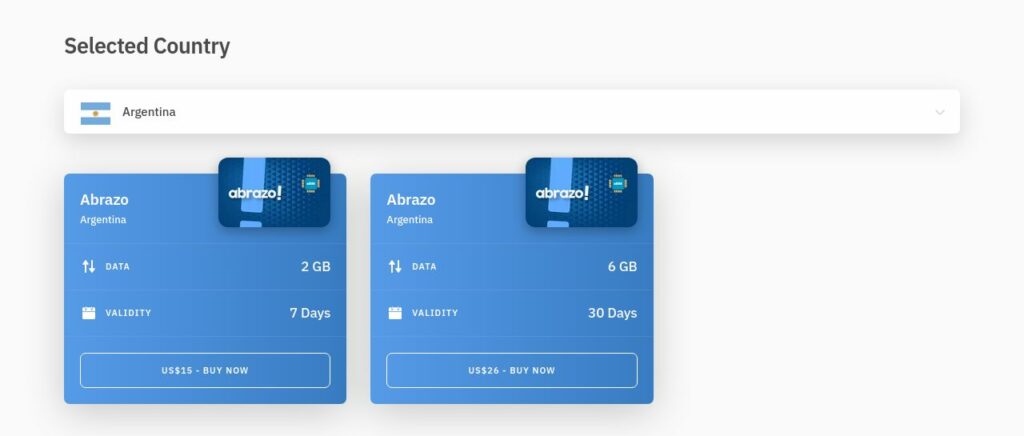
Holafly Argentina
An alternative eSim provider we can recommend is Holafly.
Holafly’s eSim is a suitable option for travellers who require large amounts of data, such as digital nomads and people who work online while they travel. All of Holafly’s Argentina eSims offer unlimited data.
Holafly’s Argentina eSim uses the Movistar Argentinanetwork to provide data and connect users to the internet. This network will provide reliable speeds and coverage while in Argentina
Here are the plans and prices for Holafly’s Argentina eSim:
6GB data valid for 15 days – Price: $44 USD
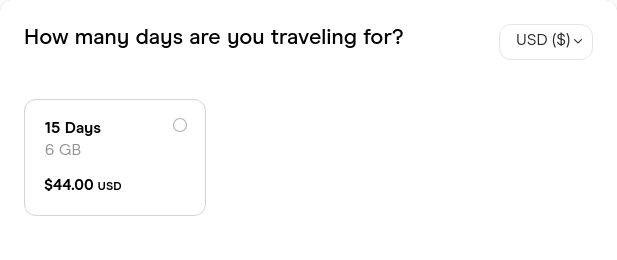
What is an eSim?
An eSIM, also known as an embedded SIM, is a digital form of a SIM card that is built directly into devices like smartphones, tablets, or smartwatches. Unlike the typical physical SIM cards, an eSIM does not require inserting or removing a physical card from the device.
Instead, the functionality of an eSIM is integrated into the hardware of the device, allowing it to be remotely activated and programmed by a mobile network operator. This means users can easily switch between different mobile networks or plans without needing to physically swap out SIM cards.
The use of eSIM technology offers a range of benefits, adding convenience, flexibility, and ease of use, particularly for frequent travelers or individuals who frequently switch between networks or travel internationally. It eliminates the need to purchase and insert physical SIM cards, making it simpler to manage multiple mobile connections on a single device.
To activate an eSIM, users can either scan a QR code provided by their network operator or manually enter the activation details. Once activated, the device can connect to the selected mobile network, enabling the user to enjoy voice, data, and messaging services, just like with a traditional SIM card.
Why Use an eSim?
– Convenience: Switching between mobile networks or plans is easy with eSIM, as there is no need to physically insert or remove a SIM card. This is especially convenient for travelers who frequently switch networks or use local SIM cards in different countries. – Dual SIM functionality: eSIM allows users to have two active mobile numbers on the same device, making it useful for separating personal and work numbers or managing multiple phone lines. – Space-saving: With eSIMs embedded within the device, there is no need for a physical SIM card slot. This frees up space within the device, allowing manufacturers to make smaller devices or utilize the space for other components. – Remote provisioning: Activation and management of mobile plans can be done remotely with eSIMs, without the need for a physical SIM card or visiting a store. This provides greater flexibility and convenience in managing mobile connectivity. – Future-proofing: eSIM technology is gaining momentum, with more mobile networks and service providers offering support for eSIMs. By using an eSIM-compatible device, users can take advantage of new services and offerings as they become available. – Overall, eSIM technology offers flexibility, convenience, and future-proofing for mobile connectivity, making it an attractive option for many users.
eSim Supported Phones
eSIM technology is becoming increasingly popular and is supported by a growing number of smartphones and other devices. Here are some examples of eSIM-compatible phones:
Apple iPhone series (iPhone 11, iPhone 12, iPhone 13, etc.): Apple was one of the early adopters of eSIM technology and offers support for eSIM on various iPhone models.
Google Pixel series (Pixel 3, Pixel 4, Pixel 5, etc.): Google’s Pixel smartphones also support eSIM functionality, allowing users to activate and use eSIMs.
Samsung Galaxy series (Galaxy S22, Galaxy Note 20, etc.): Many of Samsung’s flagship devices now come with eSIM support, enabling users to utilize eSIM technology.
OnePlus devices (OnePlus 7, OnePlus 8, etc.): OnePlus has included eSIM support in some of its smartphone models, offering users the flexibility of using eSIMs.
Motorola Razr (2020): The latest iteration of the iconic Motorola Razr features eSIM compatibility, enabling users to use eSIMs for cellular connectivity.
These are just a few examples, and the list of eSIM-compatible phones continues to expand as more manufacturers embrace this technology. There’s a very strong chance your phone supports eSims so if you’re unsure we recommend looking it up on our list of eSim supported phones .
How to Use an eSim
Using an eSim is new for many travellers, however, the good news is it’s surprisingly easy to get set up – even for the technologically challenged!
Here’s a general guide on how to use an eSIM:
Check eSIM Compatibility: Ensure that your device supports eSIM functionality. Many newer smartphones, smartwatches, tablets, and other devices are eSIM compatible including all iPhones produced since 2018.
Obtain an eSIM: There are multiple ways to acquire an eSIM. You can purchase an eSIM online from a provider like Airalo (which we recommend) or directly from a mobile network operator. Some devices also allow you to scan a QR code provided by your carrier to download the eSIM profile.
Activate the eSIM: Your eSim provider will send you instructions to activate the sim. This will usually involve scanning a QR code, entering an activation code, or downloading the eSIM profile directly onto your device.
Set up the eSIM: Once activated, your device will guide you through the eSIM setup process. This typically involves selecting the eSIM as your preferred mobile plan, configuring settings like data roaming, and entering any necessary authentication details.
Enjoy the Connection: Once the eSIM is set up, you can use it as you would with a physical SIM card. Make calls, send messages, browse the internet, and use data services as needed. You can also switch between eSIM profiles if you have multiple eSIMs installed on your device.
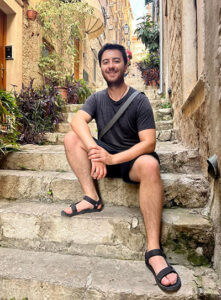
Hi, I’m Mitchell. I’m a full-time traveller, explorer and travel blogger. I've travelled all around the world, using and testing countless travel sim cards along the way. I'm the founder of and writer for Travel Sim Expert where I write guides to help travellers stay connected all around the world.
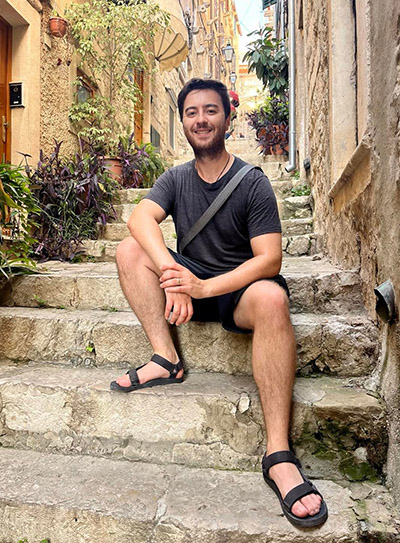
Hi, I’m Mitchell. I’m a full-time traveller, explorer and travel blogger. Travel Sim Expert is a blog dedicated to helping you find the best sim card for you, no matter where you are or what your budget is.
Learn More About Me
Popular Posts
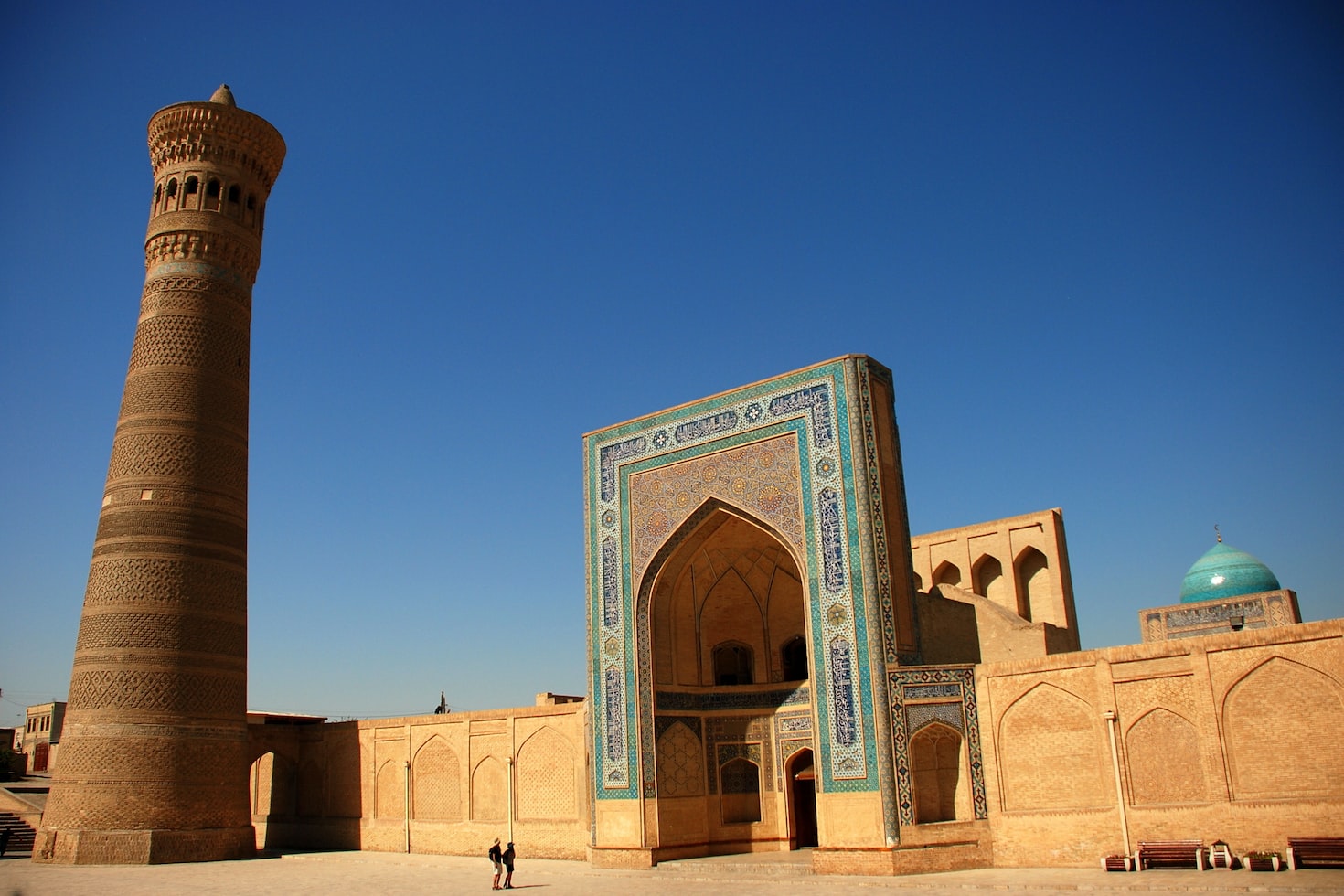
Best Tourist Sim Cards in Uzbekistan in 2024
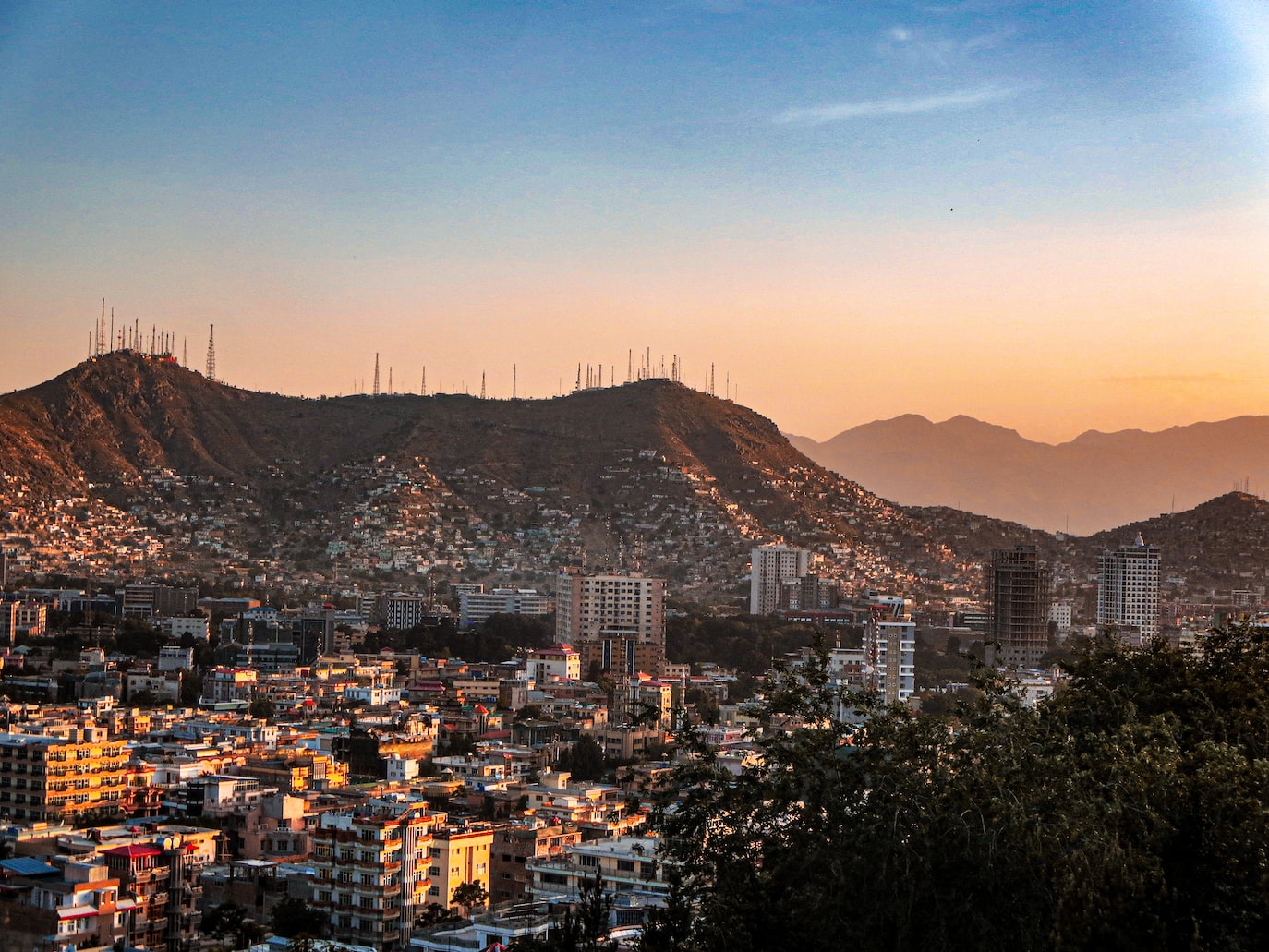
Best Tourist Sim Cards in Afghanistan in 2024

Best Tourist Sim Cards in Zimbabwe in 2024
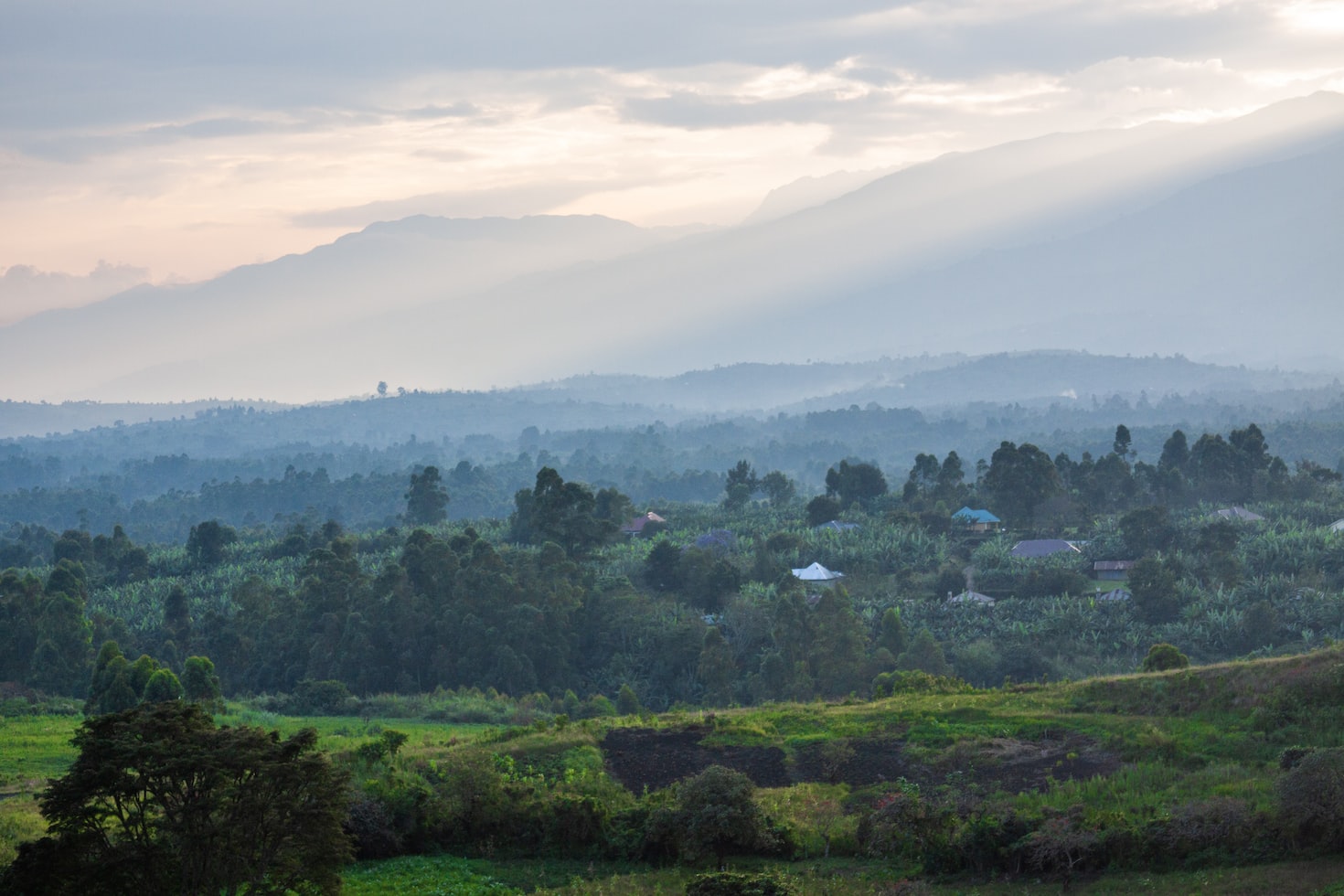
Best Tourist Sim Cards in Uganda in 2024
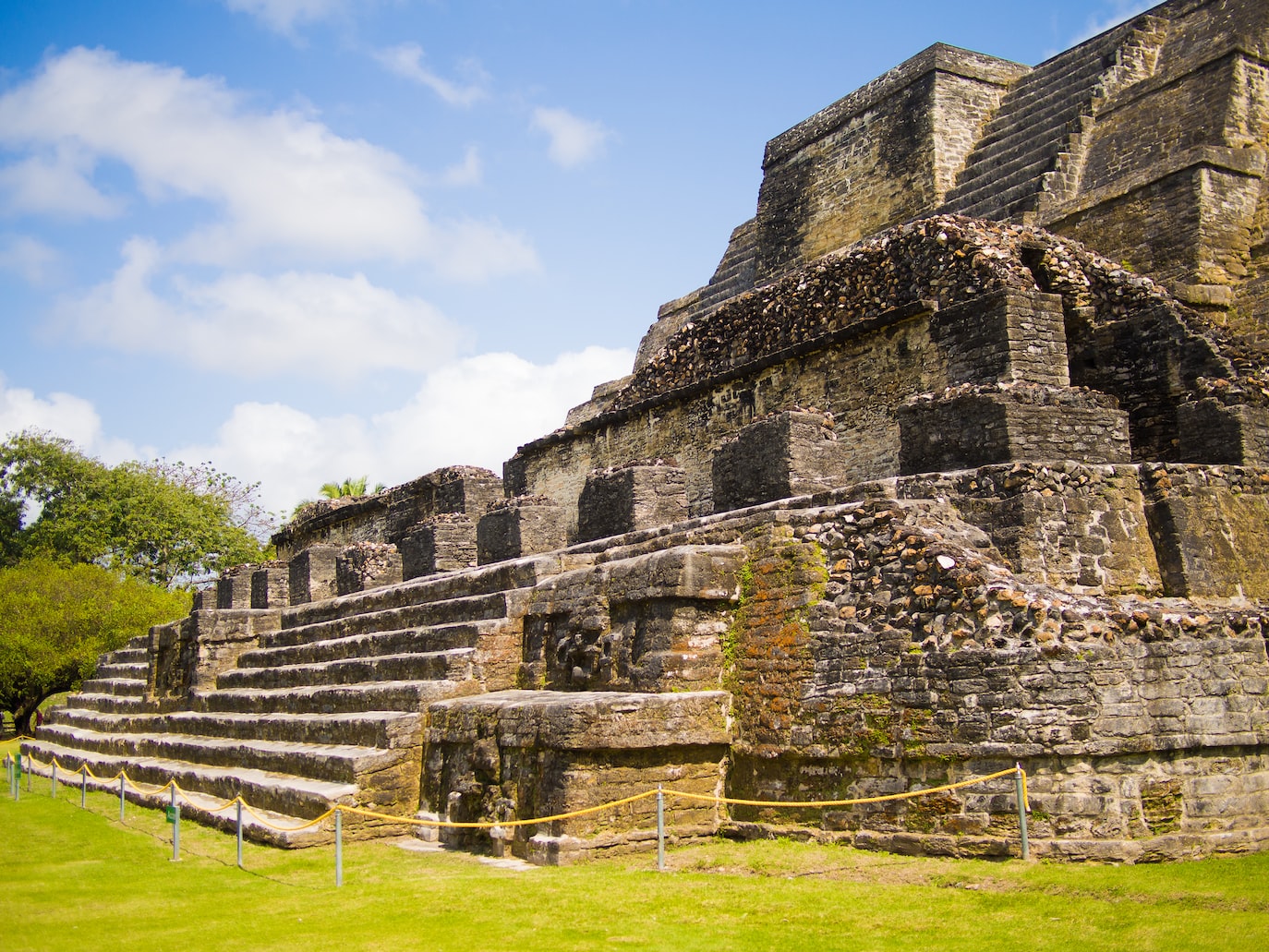
Best Tourist Sim Cards in Belize in 2024
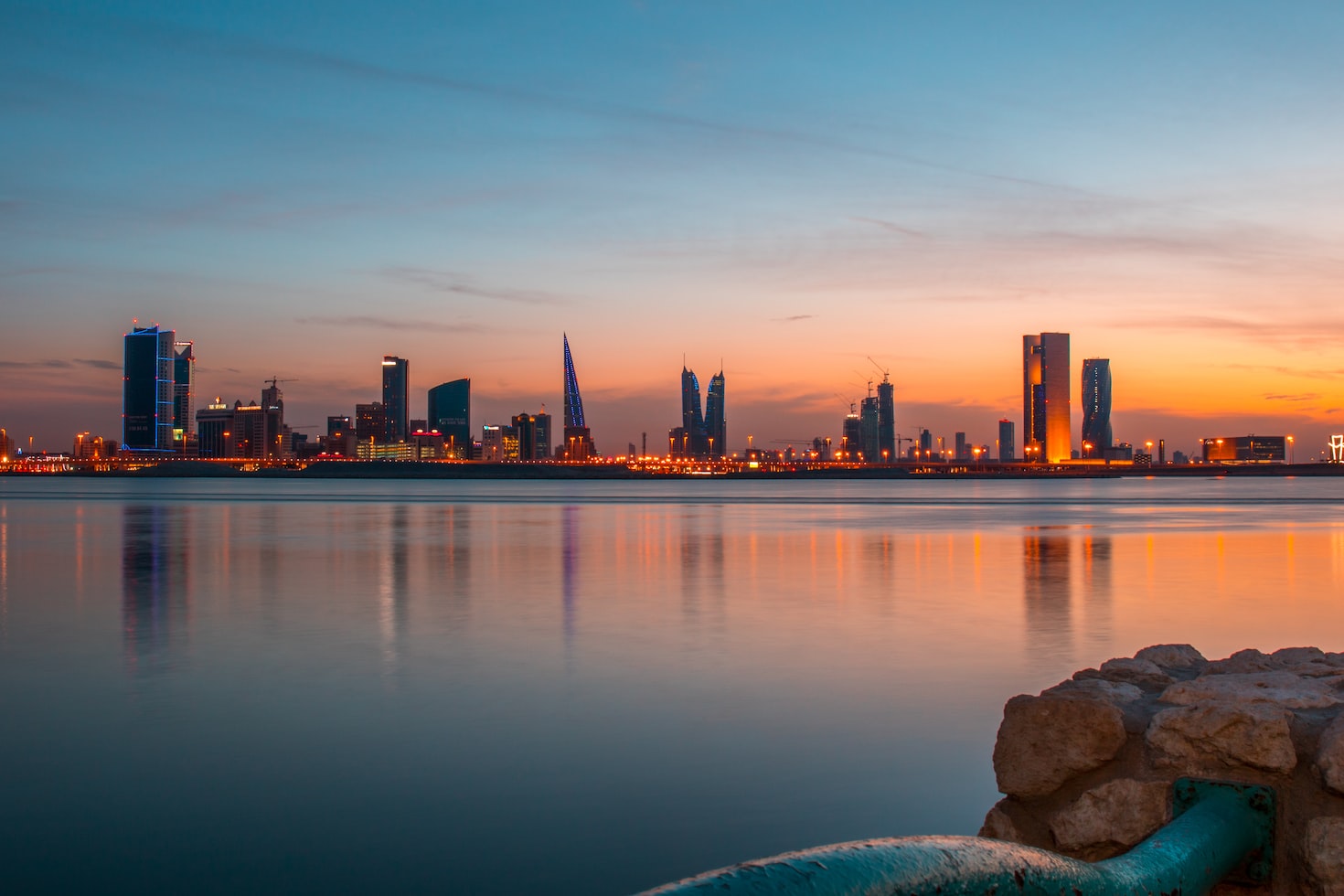
Best Tourist Sim Cards in Bahrain in 2024
Top regions, top countries.
- South America
- North America
- New Zealand
- Switzerland
© Travel Sim Expert – Designed by us.
What are virtual cards and when should you use them?

Let's be real. Sometimes, suspicious online websites have the best deals or the items we need. When you feel hesitant about entering your card information, you could use a virtual card -- not to be confused with a digital wallet .
Also: Is Temu legit? Everything to know before you place your first order
In observation of Financial Literacy Month, Google shared ways users can protect their payment information when using Google Pay. Unsurprisingly, given their ability to protect your card information easily and efficiently, virtual cards made the list.
So, what are virtual cards?
A virtual card is a unique credit card number you can enter on a site to complete a transaction. The technology masks your actual card information, keeping it hidden from businesses and protecting you against fraud.
Some virtual cards expire after every transaction, so if anyone accesses your card information, that number would be useless to them. Other virtual cards, like Google Pay , have a longer duration.
Also: The best budgeting apps: Find the Mint alternative that's right for you
If someone steals your virtual card's payment information, you can cancel just that virtual card instead of your entire credit card. Once you cancel the virtual account, the thief no longer has access to your credit card, which you can continue using.
Creating a virtual card is free and easy, and there are multiple ways to do so, regardless of the type of phone, browser, or card you use.
How can you create a virtual card?
Google pay .
One way to create a virtual card is by using Google Pay. When you check out from Chrome desktop or mobile, if you have an eligible American Express, Capital One, or Citi card, you have the option to save your card as a virtual card.
Then, every time you autofill your card information using Google Play, your virtual card information will be inputted automatically. If you don't use Google Pay, don't worry -- there are other options.
Your credit card
Many major credit card companies offer virtual cards within their platform to users free of charge, including American Express, Capital One, Mastercard, or Citi. For example, as a Citibank credit card holder, I can go into the app and generate a virtual card number simply by tapping the quick action.
I often use this feature when I try to place an online order, am nowhere near my wallet, need to enter my credit card information, and have no desire to get up. While this isn't the intended use case, it's still a big plus.
Also: Proton VPN review (2024): A very solid VPN with robust leak protection
CNET has a comprehensive list of the best credit cards with virtual card numbers. You can cross-reference this list to see if your card is included. You can also see credit cards with the feature that you might want to consider in the future.
Third-party payment sites
Many popular third-party payment sites offer virtual cards, including Wise, Stripe, and PayPal. These cards function a little differently: you can choose what funds get added and create separation between your personal account and your virtual card.
For example, with the PayPal Debit Card, you can spend your PayPal balance online and in stores. You can load money onto that card from an eligible bank account or debit card. This approach gives you control over how much money someone can access if the payment information is stolen and makes it easier to cancel the account if needed.
The best AirTag wallets you can buy: Expert recommended
The best travel vpns: expert tested, how to freeze your credit (and why you might want to).
Cookie banner
We use cookies and other tracking technologies to improve your browsing experience on our site, show personalized content and targeted ads, analyze site traffic, and understand where our audiences come from. To learn more or opt-out, read our Cookie Policy . Please also read our Privacy Notice and Terms of Use , which became effective December 20, 2019.
By choosing I Accept , you consent to our use of cookies and other tracking technologies.
Follow The Ringer online:
- Follow The Ringer on Twitter
- Follow The Ringer on Instagram
- Follow The Ringer on Youtube
Site search
- What to Watch
- Bill Simmons Podcast
- 24 Question Party People
- 60 Songs That Explain the ’90s
- Against All Odds
- Bachelor Party
- The Bakari Sellers Podcast
- Beyond the Arc
- The Big Picture
- Black Girl Songbook
- Book of Basketball 2.0
- Boom/Bust: HQ Trivia
- Counter Pressed
- The Dave Chang Show
- East Coast Bias
- Every Single Album: Taylor Swift
- Extra Point Taken
- Fairway Rollin’
- Fantasy Football Show
- The Fozcast
- The Full Go
- Gambling Show
- Gene and Roger
- Higher Learning
- The Hottest Take
- Jam Session
- Just Like Us
- Larry Wilmore: Black on the Air
- Last Song Standing
- The Local Angle
- Masked Man Show
- The Mismatch
- Mint Edition
- Morally Corrupt Bravo Show
- New York, New York
- Off the Pike
- One Shining Podcast
- Philly Special
- Plain English
- The Pod Has Spoken
- The Press Box
- The Prestige TV Podcast
- Recipe Club
- The Rewatchables
- Ringer Dish
- The Ringer-Verse
- The Ripple Effect
- The Rugby Pod
- The Ryen Russillo Podcast
- Sports Cards Nonsense
- Slow News Day
- Speidi’s 16th Minute
- Somebody’s Gotta Win
- Sports Card Nonsense
- This Blew Up
- Trial by Content
- Wednesday Worldwide
- What If? The Len Bias Story
- Wrighty’s House
- Wrestling Show
- Latest Episodes
- All Podcasts
Filed under:
- Pop Culture
‘Conan O’Brien Must Go’ Is the Best Version of Conan
The comedian’s new travel show proves he’s at his best away from the rigid confines of late night
Share this story
- Share this on Facebook
- Share this on Twitter
- Share All sharing options
Share All sharing options for: ‘Conan O’Brien Must Go’ Is the Best Version of Conan
/cdn.vox-cdn.com/uploads/chorus_image/image/73287249/conanmustgo2_netflix_ringer.0.jpg)
After hundreds of episodes of Hot Ones , there’s little a guest can do to shake up the reliable formula of thoughtful questions combined with increasingly spicy chicken wings. But Conan O’Brien isn’t just any guest. Conan is someone who arrives with “Dr. Arroyo,” his personal physician, who, when asked where he went to medical school, answers “1998”; he deposits the remains of each wing into his jacket pocket; seemingly unfazed by the heat, he chugs hot sauces like they’re in tiny liquor bottles from a hotel minibar; he rubs the drumsticks on his hands, mouth, and, yes, nipples. Even as Conan’s pale complexion begins to resemble a ripe tomato, he remains committed to the bit, raising his body temperature by two degrees in a state of delirium. (According to Dr. Arroyo, of course.) Behold, the comedy GOAT:
:no_upscale()/cdn.vox-cdn.com/uploads/chorus_asset/file/25405346/Screenshot_2024_04_12_at_9.53.49_AM.png)
Aside from being one of the funniest people on the planet, Conan seems to operate at the peak of his powers when surrounded by chaos. He was, for a time, our longest-tenured late-night host: He had a career on the airwaves that spanned nearly three decades, not unlike his icon, Johnny Carson. But while Conan could do the usual late-night beats in his sleep—the opening monologue, the celebrity interviews—he was never better than when things went completely off the rails. Consider: Conan used his last week as the short-lived host of The Tonight Show to waste NBC’s money on bringing a Kentucky Derby–winning horse to set; trolled his interns and staff in remote segments; introduced the world to his associate producer Jordan Schlansky, who gamely played a pretentious foil ; found an actual Tinder date with Dave Franco.
But some of Conan’s best work has been when he’s left the rigid confines of late night altogether. In 2015 Conan began a spinoff travel series, Conan Without Borders , in which he explored other countries armed with little more than his self-deprecating wit. “[Travel shows are] completely outside the realm of anything I do,” he explained to The New York Times in 2019. “They can be frightening because they take away a lot of control. I’m out there, I don’t often know what I’m going to encounter.” More often than not, it’s led to comedy gold. For instance, while he was taking a Japanese etiquette lesson, Conan’s instructor said that he wasn’t her type. The reason: “Face.”
Face . You could never script something so casually brutal; therein lies the magic. Most important, Conan never mocks other cultures to induce laughs—instead, he makes himself the butt of the joke, leaning into the bit of an ignorant tourist. But what truly elevated Conan Without Borders was how he could deftly weave in educational components and approach dark periods of a country’s history with genuine sensitivity. (Conan’s visit to the Armenian Genocide Memorial with his longtime assistant, Sona Movsesian, is among the most emotionally resonant moments of his career.) Thankfully, even though Conan has bowed out of the late-night scene, he’s doubling down on the travelogues.
On Thursday—Conan’s birthday, no less—Max released Conan O’Brien Must Go , a four-part series that takes him to Norway, Argentina, Thailand, and Ireland. These destinations were inspired by his podcast, Conan O’Brien Needs a Friend , which, in addition to celebrity interviews, features conversations with fans from around the globe. (The fans frequently invite Conan to come visit their neck of the woods; few would ever imagine he’d take them up on the offer.) While Conan O’Brien Must Go doesn’t rely on celebrity cameos, every episode opens with Werner Herzog voice-over narration about the grandeur of Mother Earth and how, to fully appreciate its natural wonders, we must sometimes “defile it.” Rest assured, Conan the Defiler is more than up to the task.
What separates Conan O’Brien Must Go from his first travel show is the incorporation of those fans, including a Norwegian fish farmer, an Irish medical student, and an Argentine painter. The fans understandably react to Conan showing up at their front door with a mixture of shock and glee, but before they even get a chance to compose themselves, he playfully roasts their respective living situations. Nobody gets it worse than Jarle, a young Norwegian rapper who still sleeps with soccer-themed bedsheets from childhood and has bread so stale it lands with an audible thud when Conan drops it. “I’ll wipe the floor with you,” Conan tells Jarle, “which actually might be a good idea, because I think you’d pick up a lot of lint.”
The Ringer ’s Streaming Guide

There’s a lot of TV out there. We want to help: Every week, we’ll tell you the best and most urgent shows to stream so you can stay on top of the ever-expanding heap of Peak TV.
But while it’s enjoyable in its own right to see Conan surprise fans, Conan O’Brien Must Go is never better than when he throws all caution to the wind mingling with the locals. One standout bit in Argentina involves a soccer team that invites Conan to its stadium, where he proceeds to take the sport’s reputation for theatrical diving to another level, with fake blood spurting out of his mouth. Argentina is also where Conan reunites with his archnemesis, Schlansky, who repeatedly corrects him on the proper pronunciation of tango over dinner. (Schlansky insists he’s right, even when the chefs disagree with him.) And while some comedians might have second thoughts if nobody seems entertained by their shenanigans, Conan always doubles down—if only for his own amusement. (The Argentine gauchos did not enjoy his singing talents.)
Despite all the silliness that’s part of the Conan experience, Conan O’Brien Must Go also manages to have moments of real profundity. For one, Conan uses the Ireland episode to explore his own heritage, culminating with a visit to the patch of rural farmland that belonged to his ancestors. It puts everything into perspective: His forebears fled the Irish famine for America, and their descendant returned with a camera crew and decades of fame and success under his belt. Truly, what are the odds? But what really tugs at the heartstrings is a brief video from the Norwegian fish farmer Kai, who explains how Conan’s visit to his small town completely changed his life. It’s genuinely heartwarming stuff, proving that comedy can achieve more than just laughs when it’s approached with curiosity and empathy.
It’s been three years since Conan last graced our screens, and his absence really underlined that he’s one of one. You can’t imagine anyone else showing up to a foreign country and reacting to situations on the fly without everything falling apart at the seams. But as Conan proved time and again during his late-night tenure, that’s where great comedy can be found: among the people, whether it’s in the streets of Harlem or a Civil War reenactment . Conan’s late-night career went through many phases , all of them worthy, but in retrospect, it feels like the format was holding him back. Conan O’Brien Must Go isn’t just a hilarious return to form: It’s one of the best things he’s ever done. Let’s hope the show’s Season 2 renewal will be a matter of when, not if. With Conan at the helm, there are so many more countries worth exploring—and defiling.
Next Up In TV
- ‘Shogun’ Finale Recap
- ‘Shogun’ Delivers a Satisfying Conclusion With an Understated Finale
- Catching Up With Tyler Cameron and ‘Love Island’ (U.K.) Season 2, Episodes 13-19
- Netflix’s Backtrack on Transparency
- Scenes From the Trump Trial, the NBA’s New Rights Deal, the Afterlife of the Alt-Weeklies, and Remembering Howie Schwab
- Danielson-Ospreay: Greatest Match Ever? Plus, Swerve Strickland Makes History at AEW Dynasty.
Sign up for the The Ringer Newsletter
Thanks for signing up.
Check your inbox for a welcome email.
Oops. Something went wrong. Please enter a valid email and try again.

Hall of Fame: Tony Stark, Iron Man
Five years out from ‘Avengers: Endgame,’ Mal and Jo induct the iconic character into the ‘House of R’ Hall of Fame!

Mock Draft Week in America, Knicks Mania, the Yankee Umpire Affair, and Howie Schwab Stories With Peter Schrager
Bryan and Peter talk about a wide variety of New York sports topics, including the Knicks’ Game 2 win over the 76ers

Ant Rises to the Occasion and Bounce-Back Games to Watch
Austin and Pausha discuss the first group of playoff games, break down possible bounce-back games, highlight Anthony Edwards’s continued rise to stardom, and more

Is Becky Lynch the Right Call as Women’s Champ? Plus, Making King of the Ring Big Again.
In the first repackaged episode of ‘Ringer Wrestling Worldwide,’ Ben Cruz, Khal Davenport, and Brian H. Waters debate the greatest repackages in wrestling history

Final 2024 NFL Mock Draft
In the last episode before the 2024 NFL draft, the guys compare notes, put their pencils down, and turn in their mock draft ahead of Round 1 on Thursday

Brutal Losses for the Lakers and Sixers. Plus, the Annual Daniel Jeremiah and Todd McShay NFL Draft Preview!
Russillo takes a look back at the incredible Monday night NBA playoff games, and Todd McShay and Daniel Jeremiah come on to discuss the top quarterbacks, share their candidates to trade up, and play a quick game of On the Clock

IMAGES
VIDEO
COMMENTS
Official rate: $905,30. Blue market rate: $985,00. MEP rate: $1000,00. If you use a foreign card in Argentina, this MEP rate will apply. Visa will charge you that rate at the time of purchase, while Mastercard charges the official rate and then refunds the difference a few days later.
Using a debit card. In Argentina, ATMs can be expensive to use, costing up to $10 or $11 per transaction, according to forums. Aside from paying foreign transaction fees, you'll pay local ATM fees, and you'll be limited to how many pesos you can get per withdrawal. You'll need to make multiple withdrawals, adding up the fees.
Foreign Credit Card Usage: On November 3, 2022, the Argentine Central Bank issued a regulation allowing credit card issuers to implement an alternate, more favorable exchange rate for tourists utilizing foreign (i.e., non-Argentine) credit cards. This is a legal, safe method to pay for goods and services in Argentina at a more favorable rate.
Until recently, payments made in Argentina with foreign credit and debit cards were changed at the official dollar exchange rate, which is AR$185.75 to the dollar at the time of writing. But on November 4, Argentina's central bank launched a preferential exchange rate for foreign tourists.
Finally, it's worth considering that you can redeem Ultimate Rewards points directly for airfare using the Chase Ultimate Rewards travel center. Points from the Sapphire Reserve are worth 1.5 ...
The Best Argentina Travel Guide: What You Must Know Before Visiting Argentina Argentina Travel Tips: Quick Facts. Let's start this post with a selection of essential information you need to know before visiting Argentina. AREA - 2,780,400 km2 (1,073,500 sq mi) POPULATION - 46,057,866 (2024 estimate)
A complete guide to Argentina travel in 2024, everything you need to know by a local from itineraries, travel guides, and insider tips. ... How to get a SIM card in Argentina. The three main phone companies in Argentina are Personal, Movistar, and Claro.
The currency of Argentina is the Argentine Peso (ARS). One ARS is equal to 0.0046 GBP (as of 11th Jan 2023), meaning that you'll get $219 ARS for £1. In Argentina, you will see the symbol $ to denote prices. Note: You can check the Central Bank of Argentina for the ARS's latest value against GBP. Each ARS comprises 100 centavos.
17 Argentina Travel Tips. Table of Contents. Money + Exchange Rate. 1: Bring cash. 2: Don't rely on credit cards. 3: There is more than one exchange rate. 4: Be strategic about exchanging money. 5: Be careful exchanging money. 6: You can often pay in dollars.
A bus from Mendoza to San Rafael costs 2,500 ARS for a one-way ticket. 6. Visit Ushuaia. Ushuaia is the most southerly city in the world and the largest city in Tierra del Fuego. This is a very popular town for travelers coming to the end of their South American journey, or for those traveling to Antarctica.
New rules for the current COVID-19 entry requirements. Since August 24th 2022, it is not required to present anymore neither the affidavit "Declaración Jurada", a COVID-19 test, nor a COVID-19 health insurance to enter Argentina for Argentine Citizens, Foreign Residents and Non-Resident Foreigners. It is also not required to do the quarantine.
some context: Looking to buy a couple internal flights in Argentina. Tickets from Norwegian are cheaper in Argentinian Pesos than in USD or GBP. But at the last booking step, there's a check for the bank card number, and it only accepts Argentinian bank cards ("Los pagos en ARS solo se pueden efectuar con tarjetas emitidas en Argentina.
The SUBE card is a contactless card that passengers wishing to use the Buenos Aires public transport network in a fast and convenient way can put money on. Learn all about it here. Civitatis Buenos Aires. Travel Guide Information Info. close. Information. Planning your trip Planning your trip Required documentation
7 -Argentina Travel Tips: Internet. Hotels, cafes and restaurants have free wifi in Argentina. In Buenos Aires you can download an app and have access to free wi-fi un many points of the city. Buenos Aires has over 250 free wifi hotspots in the city, including on the subway and Metrobus transport networks. The BA WiFi app allows users to locate ...
Travel Advisory. August 18, 2023. Argentina - Level 1: Exercise Normal Precautions. Reissued with updates to crime information. Exercise normal precautions in Argentina. Some areas have increased risk. Read the entire Travel Advisory. Exercise increased caution in: City of Rosario (Santa Fe province) due to crime.
Argentina AVE fees for Green Card holders. The Argentina visa fee is $200, allowing multiple entries and exits for citizens who are traveling to Argentina from the US.. Argentina visa application process for Green Card holders. To ensure our readers are fully informed on the application process for an Argentina tourist visa as Green Card holders, you can apply via Atlys for convenience or ...
Am heading off to Argentina next week and being a bear of very little brain I've been looking on here and watching endless YouTube videos to try to understand Blue Rate, MEP, using Western Union, using credit/debit cards etc. . Suddenly I hear about the devaluation of the peso by 50 percent and not really understanding maths or economics I am a bit confused as to how this affects things ...
Alosim has four variants for Argentina, which are listed below: Argentina 1 GB eSIM for 7 days, costing 8 USD - most popular with Phone Travel Wiz readers. Argentina 2 GB eSIM for 15 days, costing 15 USD. Argentina 3 GB eSIM for 30 days, costing 18 USD - very popular with Phone Travel Wiz readers.
Check out my comparison of the best travel sim cards with data in 2024 and pick the one that suits your trip to South America. Best e-sim cards for Argentina. ... Buying a prepaid sim card in Argentina is a little more complicated than usual. In my opinion the online sim cards for Argentina are pretty expensive and buying a sim card at a kiosk ...
1. eSim with Airalo. My preferred option for getting an Argentina prepaid sim card is by setting up an eSim. An eSim is the perfect balance for budget and ease and is great for travelers looking for convenience. If you're not in Argentina for very long you won't have to waste a single minute to finding a sim card.
Argentina Sim Card Prices. A Tourist Sim Card in Argentina costs 2,200 ARS in April 2024, however, the exact price will often depend on the store you visit and the plan you choose. Alternatively, an eSim in Argentina will cost between $15 USD and $26 USD. This, again, depends on how much data you require and which eSim provider you choose.
Your credit card Many major credit card companies offer virtual cards within their platform to users free of charge, including American Express, Capital One, Mastercard, or Citi.
On Thursday—Conan's birthday, no less—Max released Conan O'Brien Must Go, a four-part series that takes him to Norway, Argentina, Thailand, and Ireland. These destinations were inspired by ...